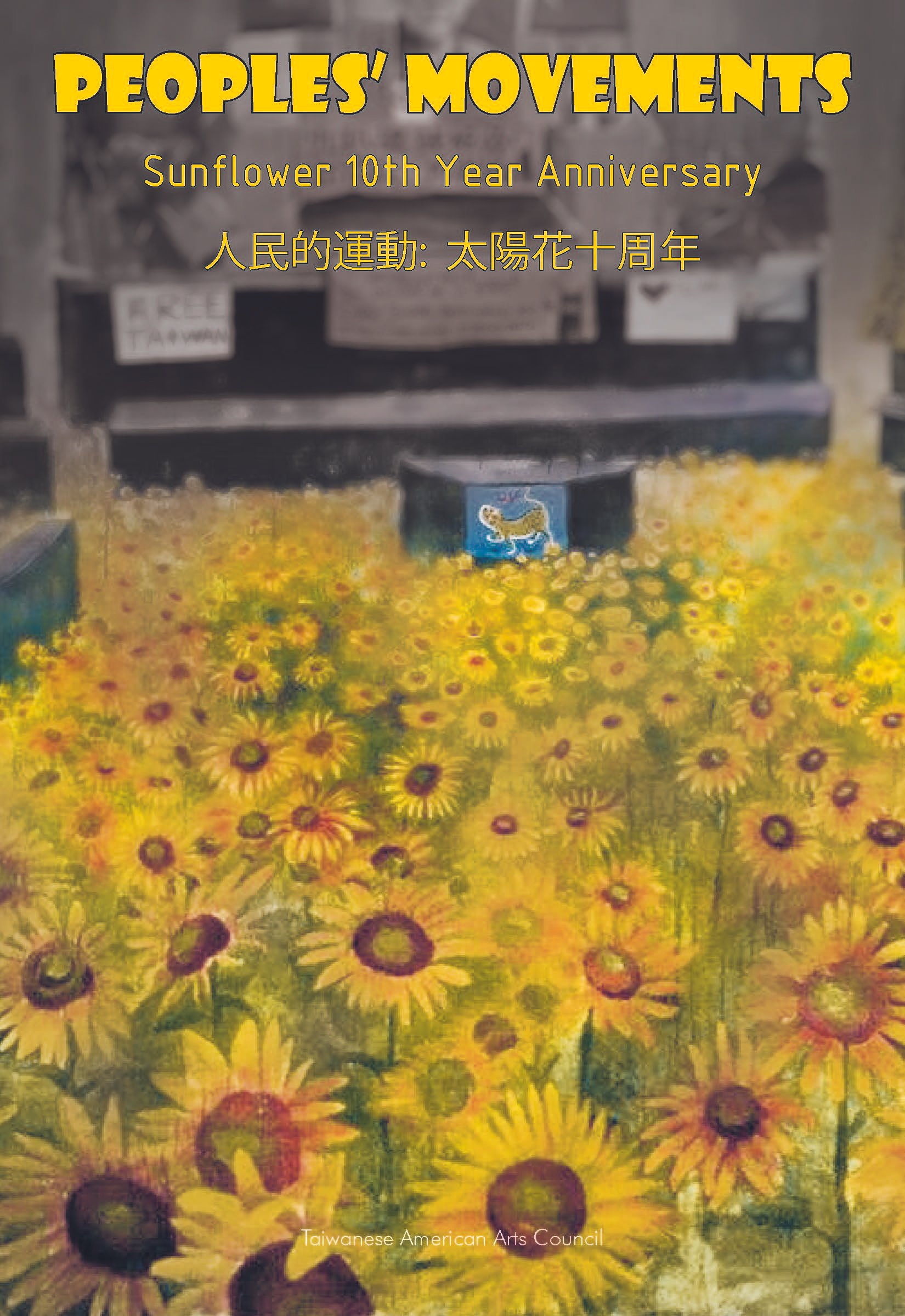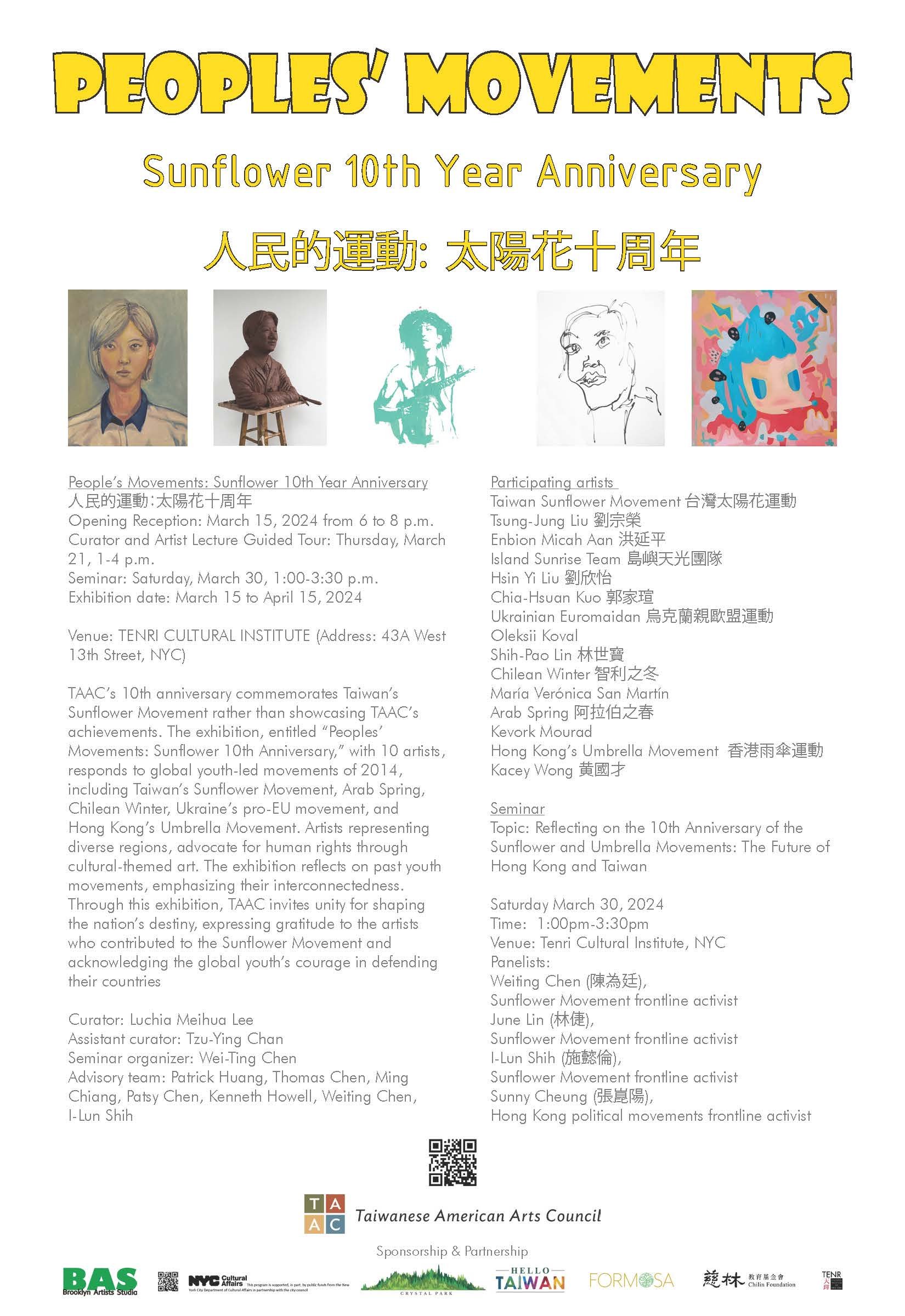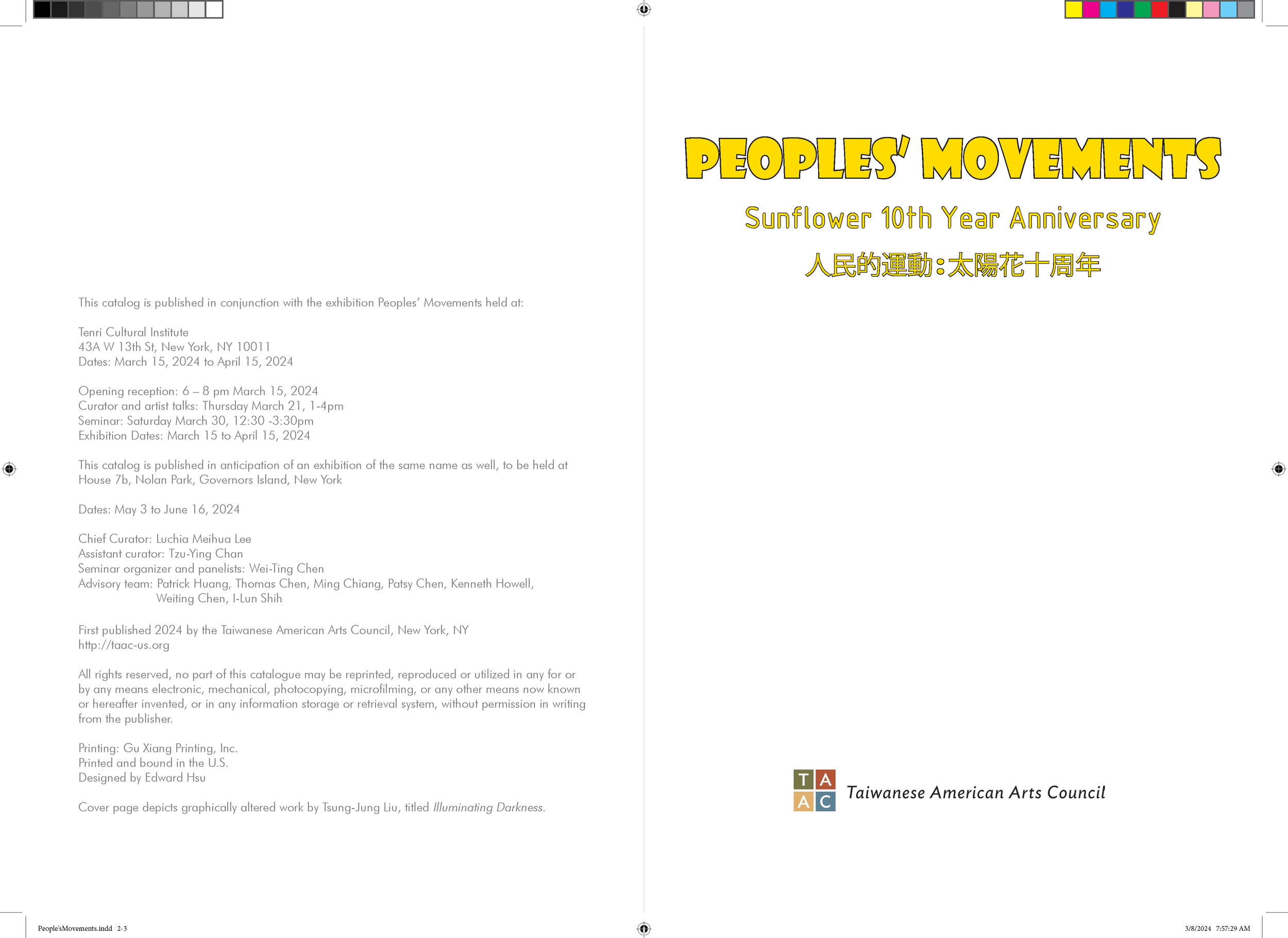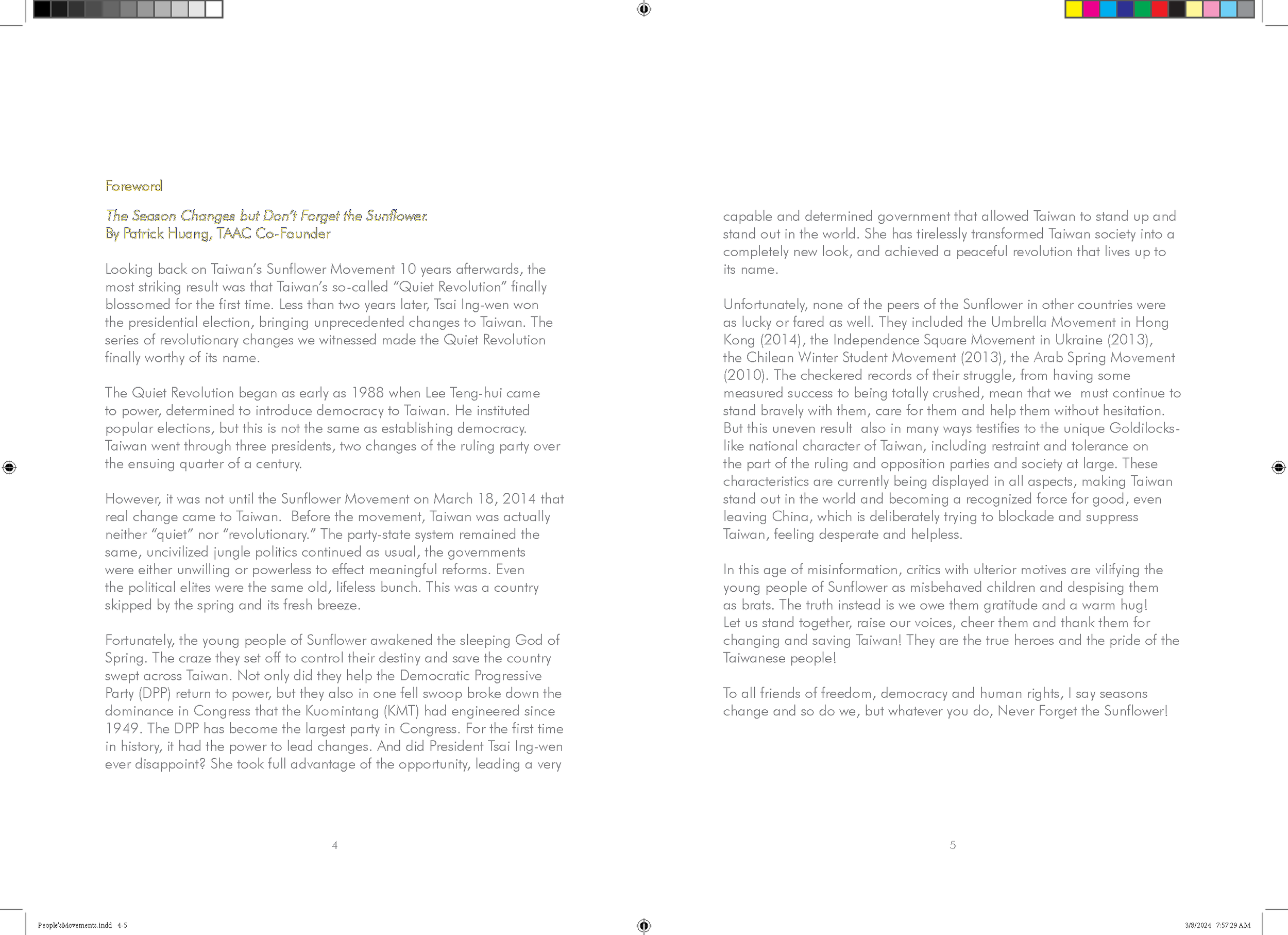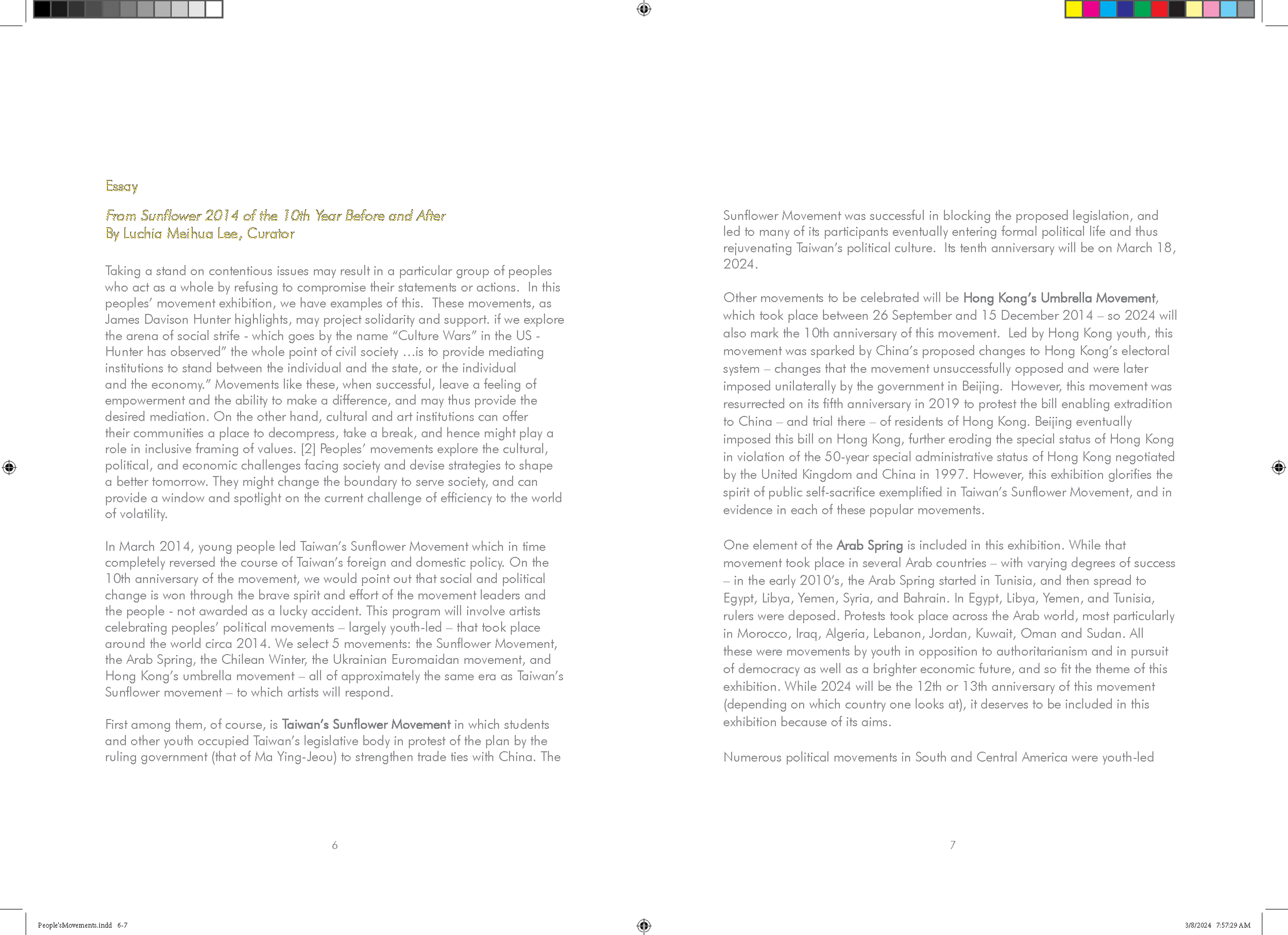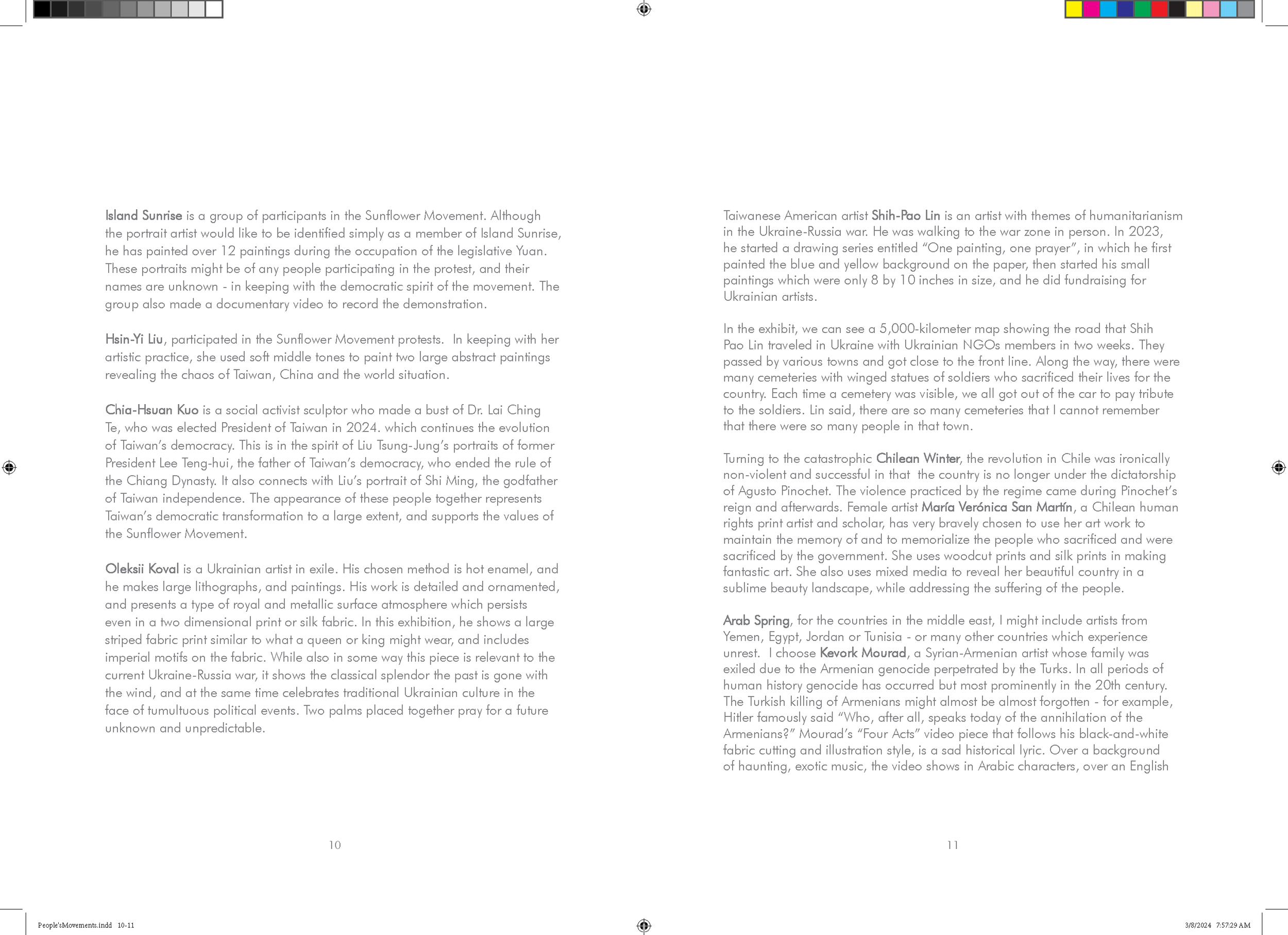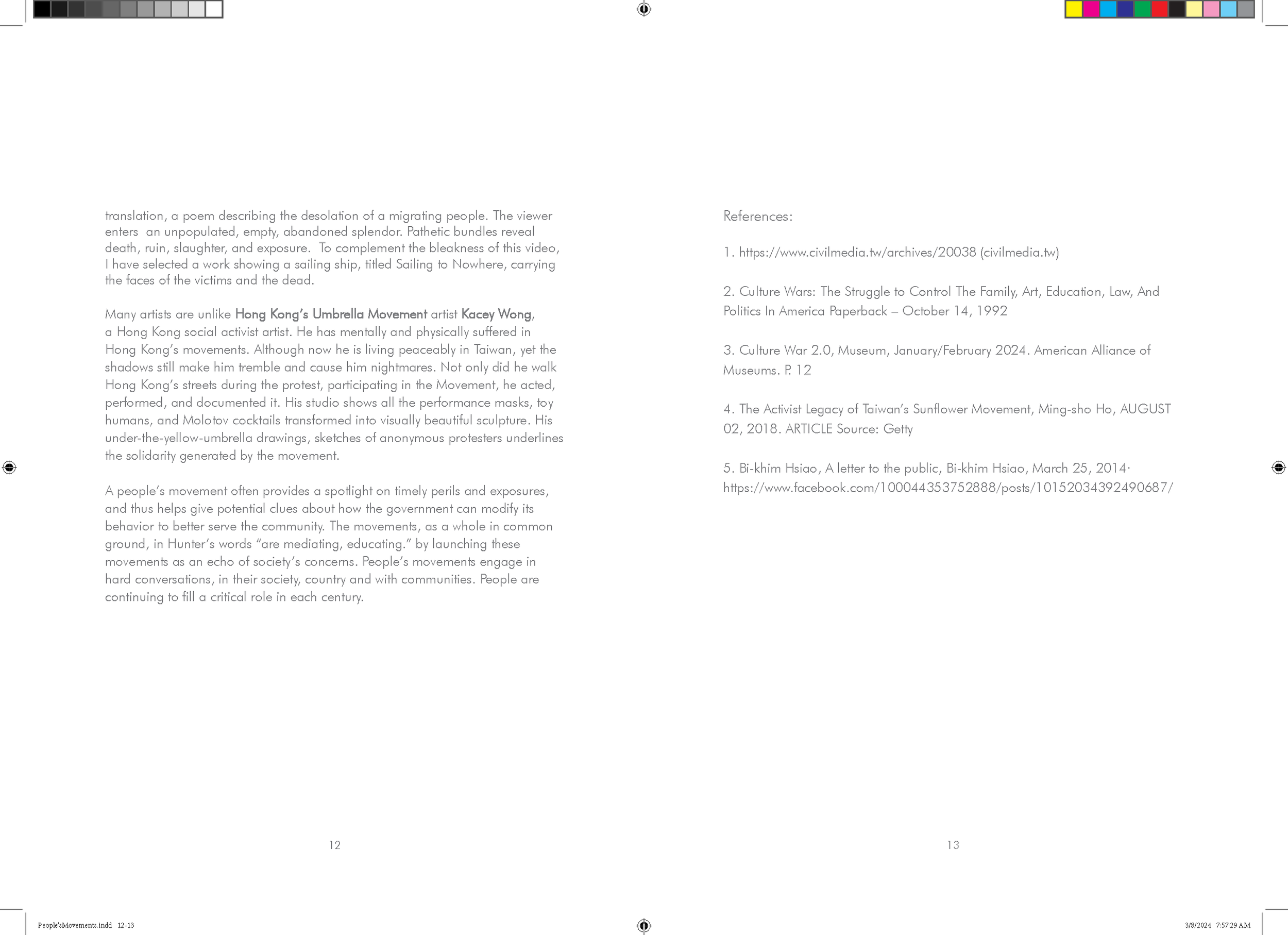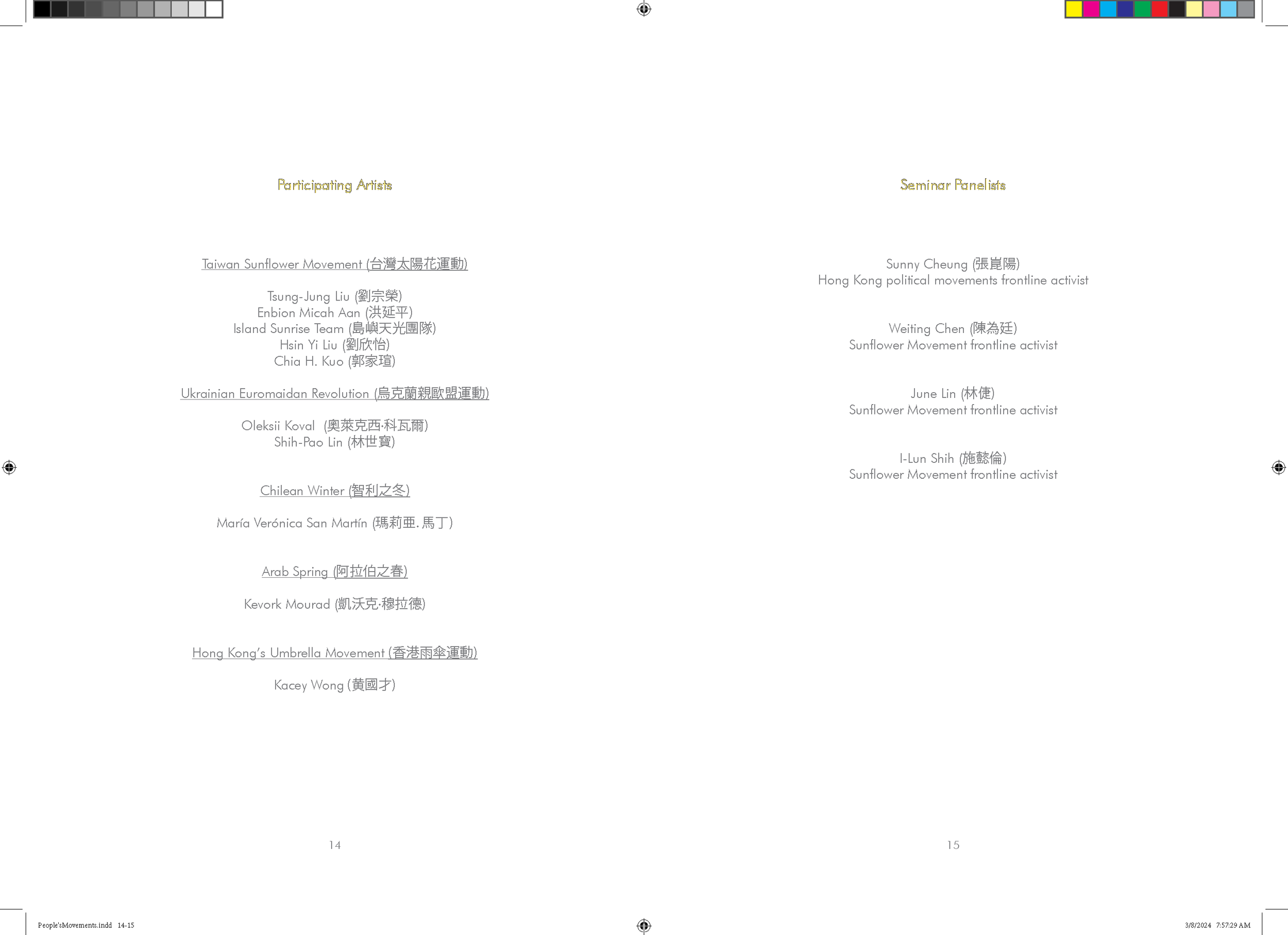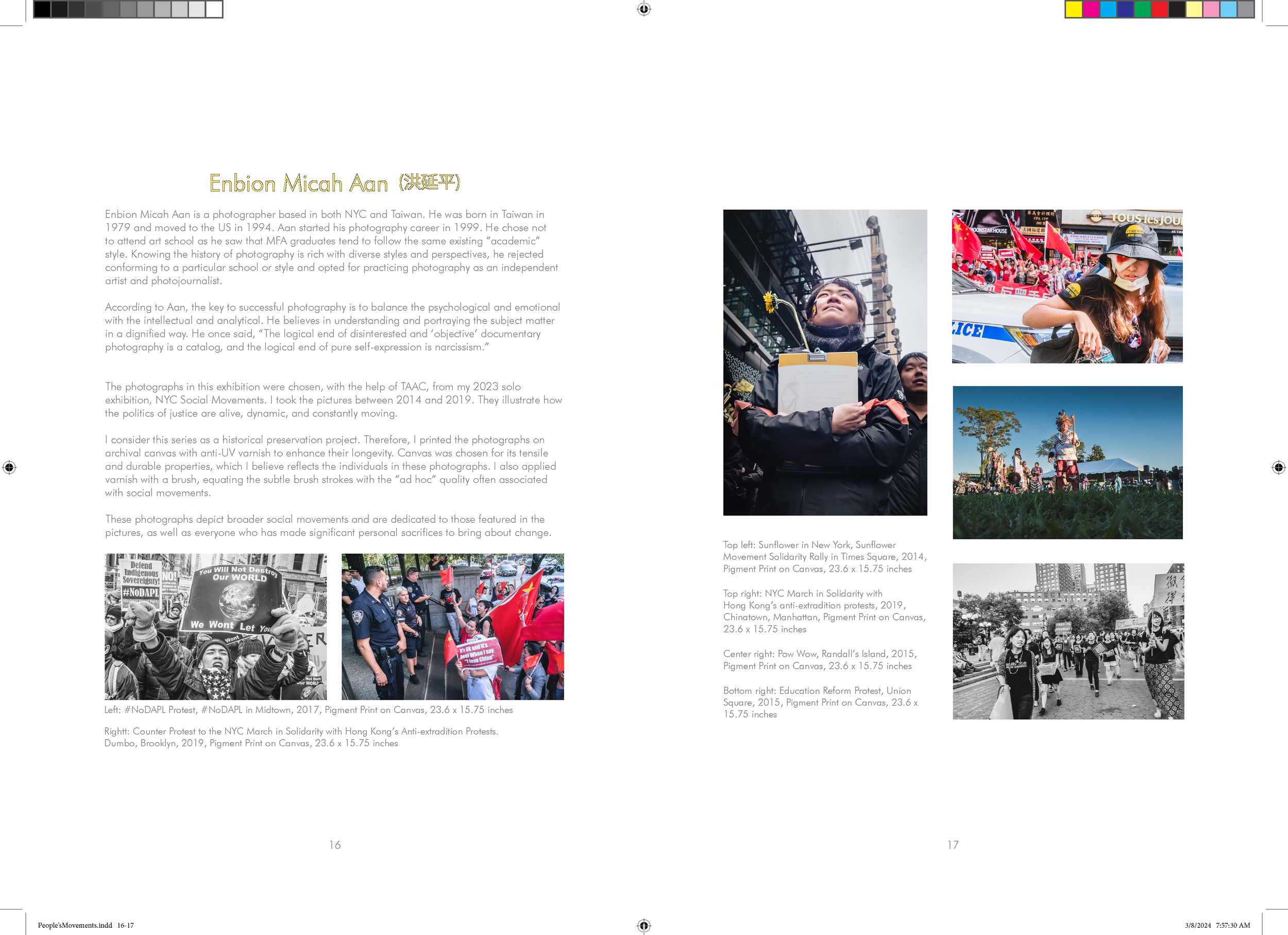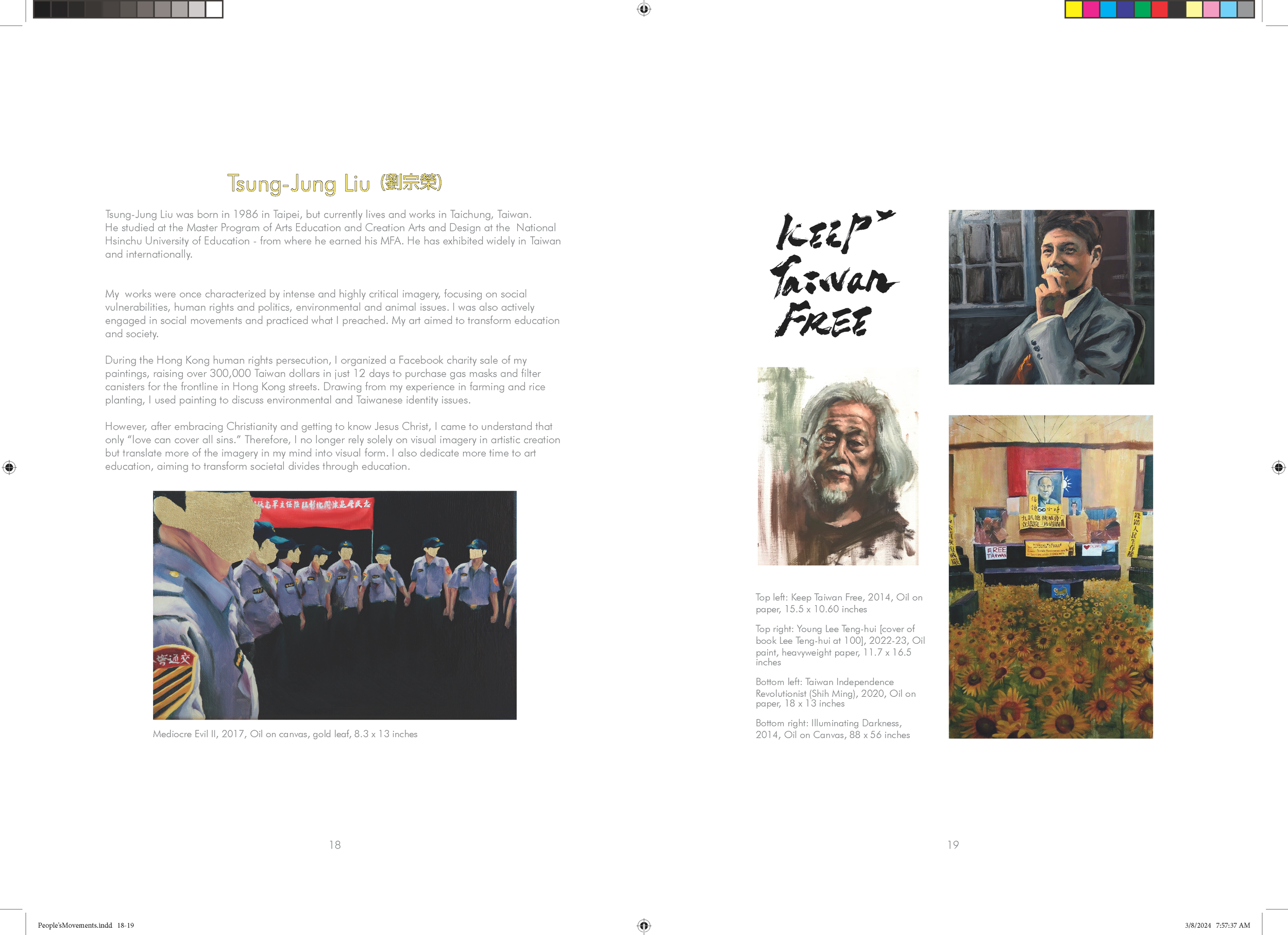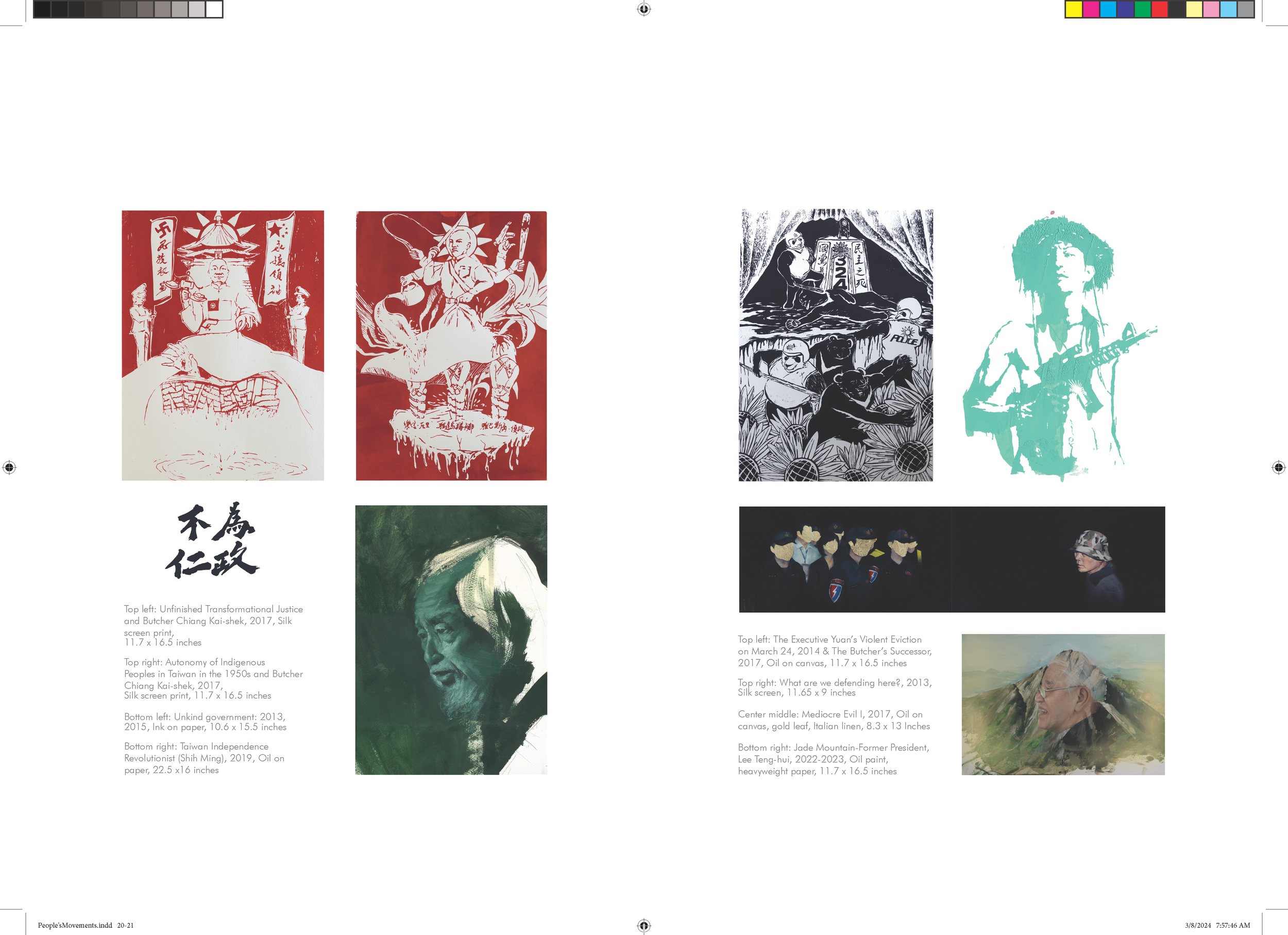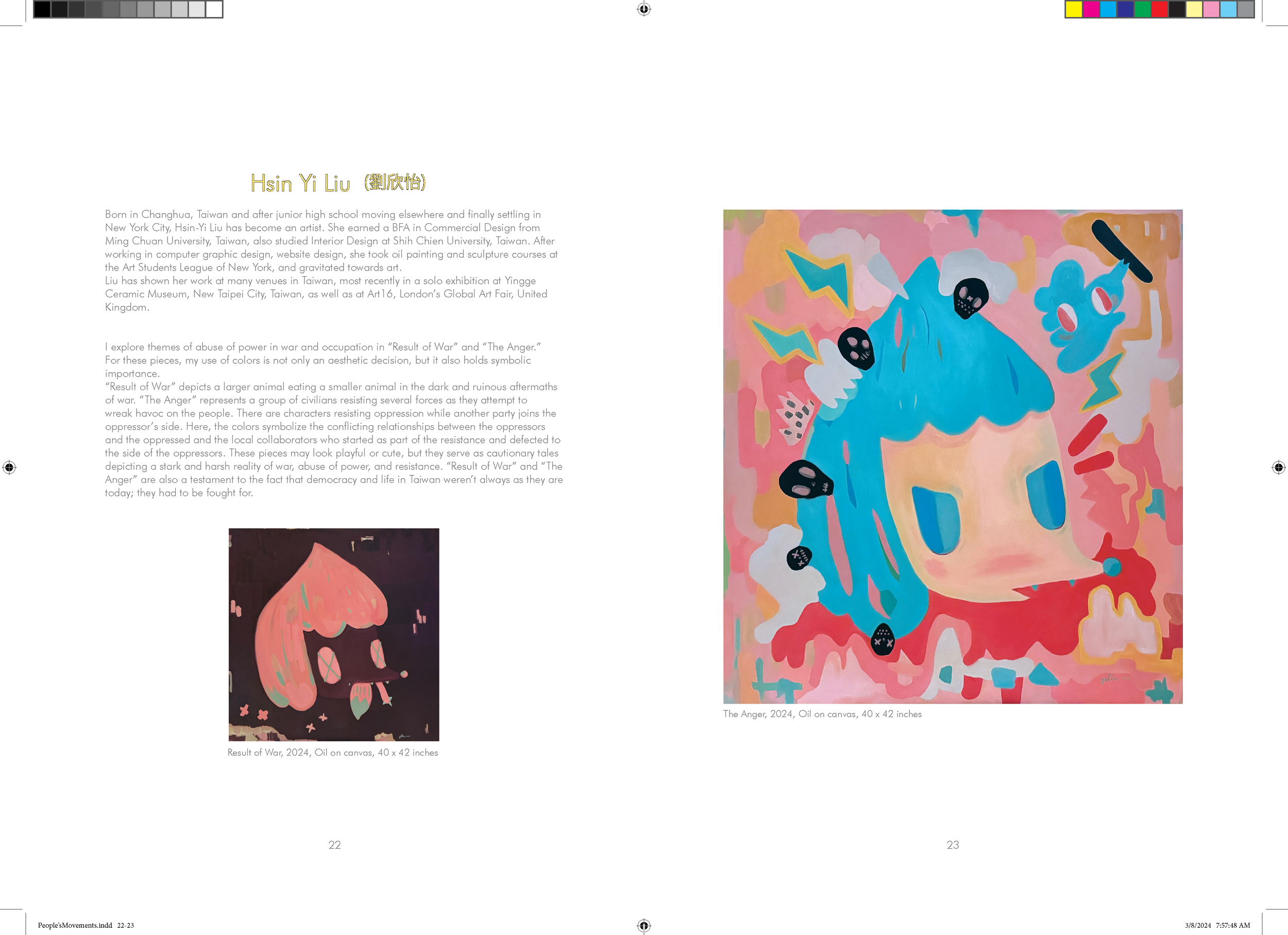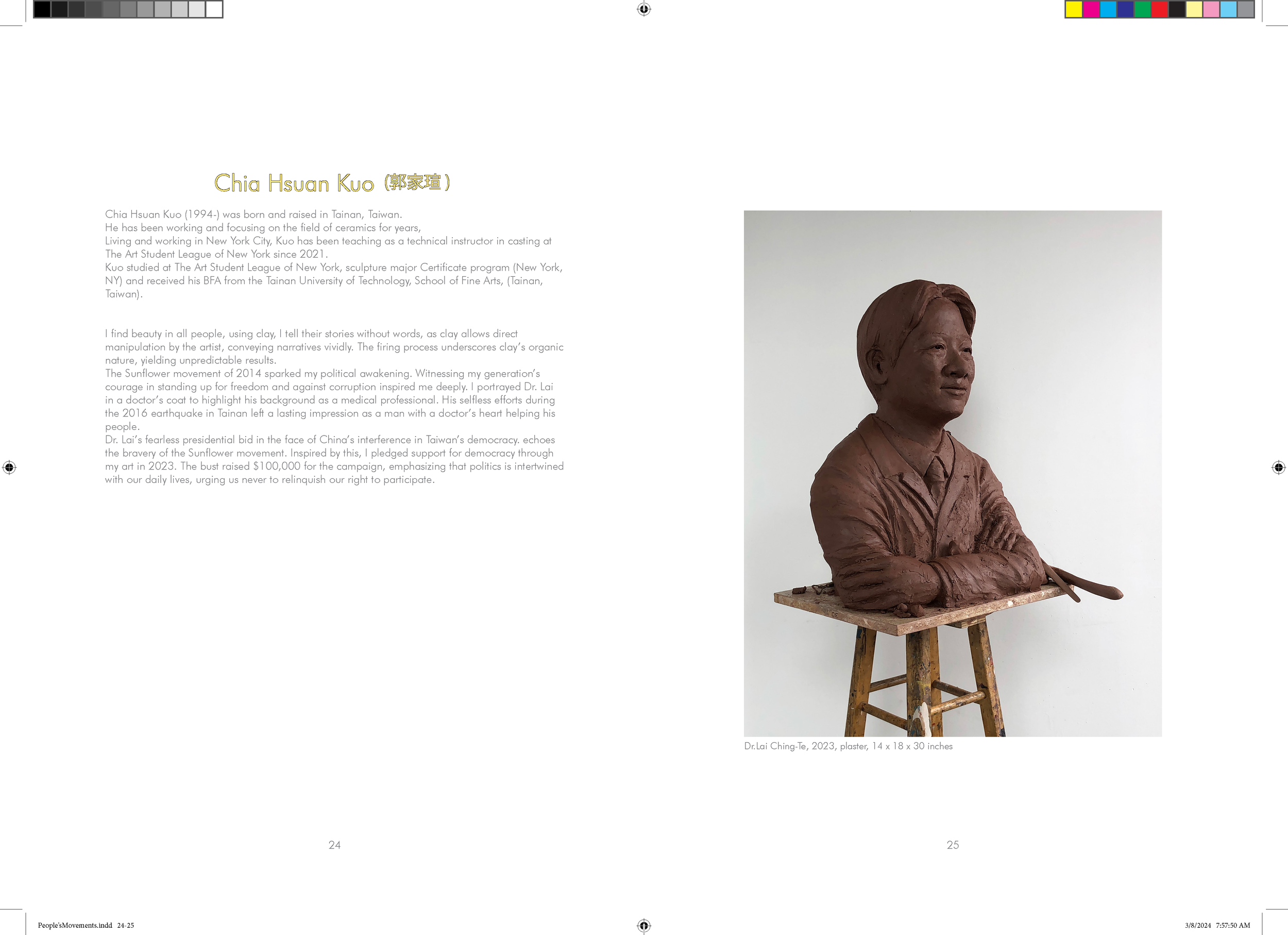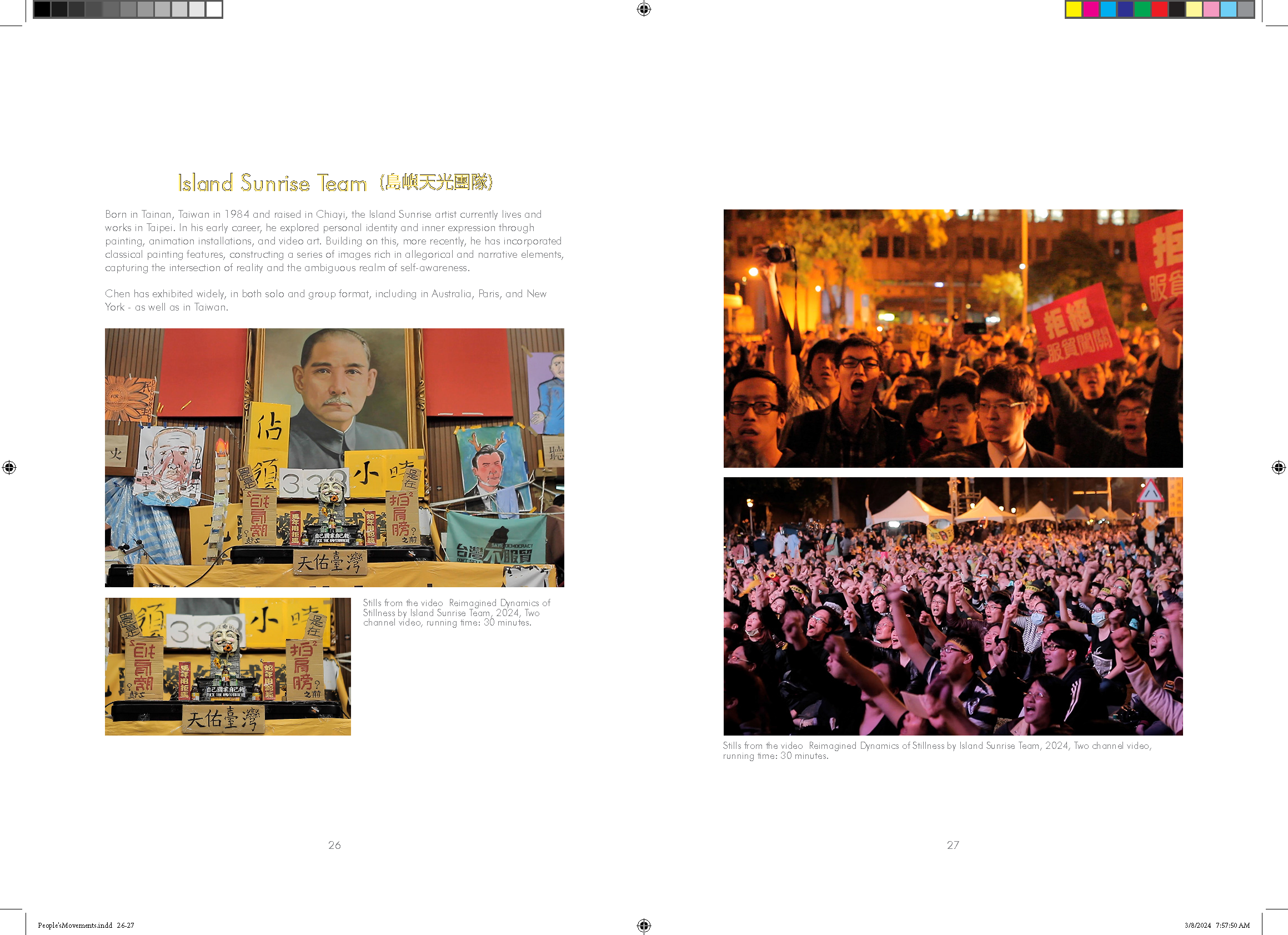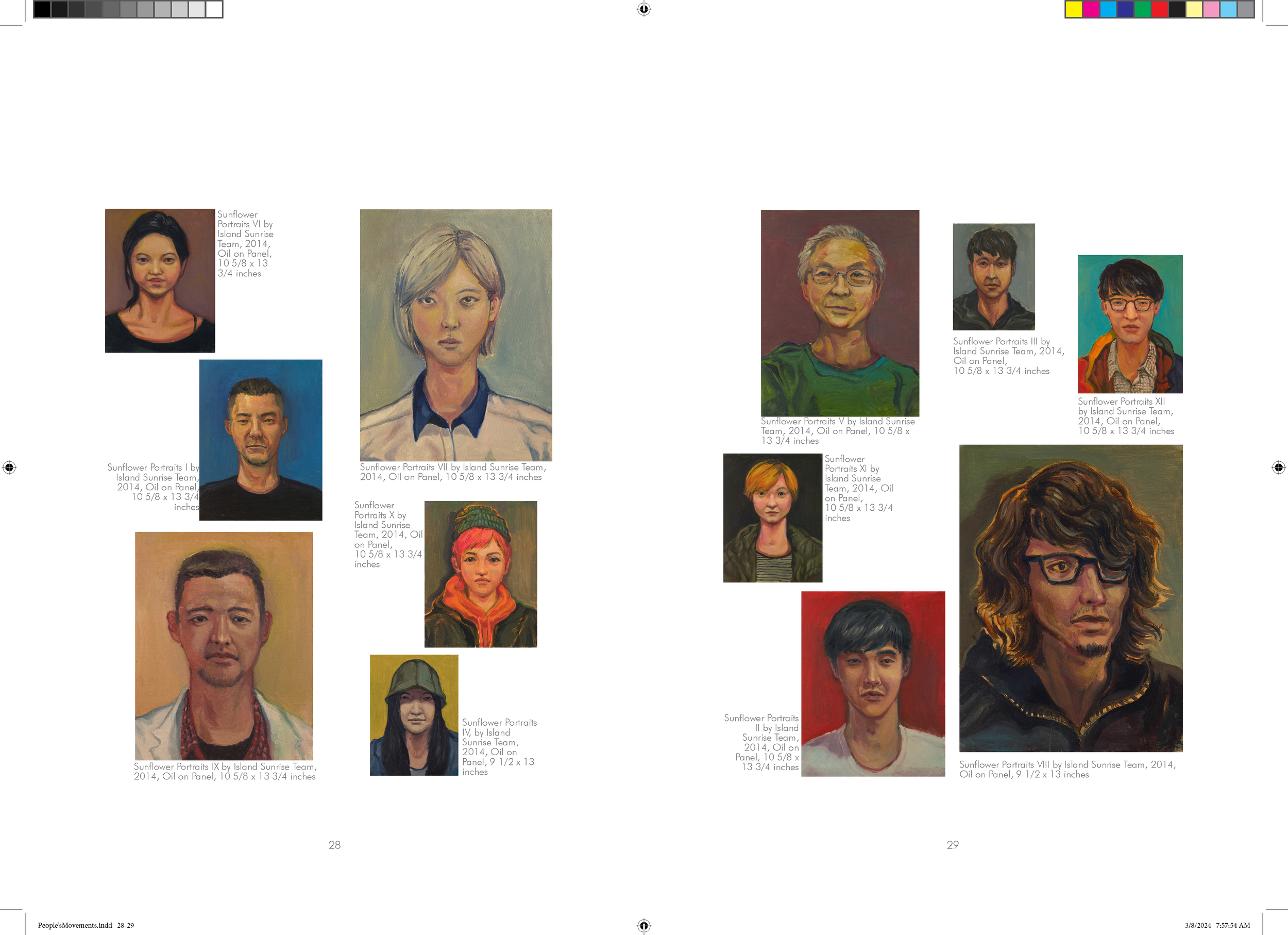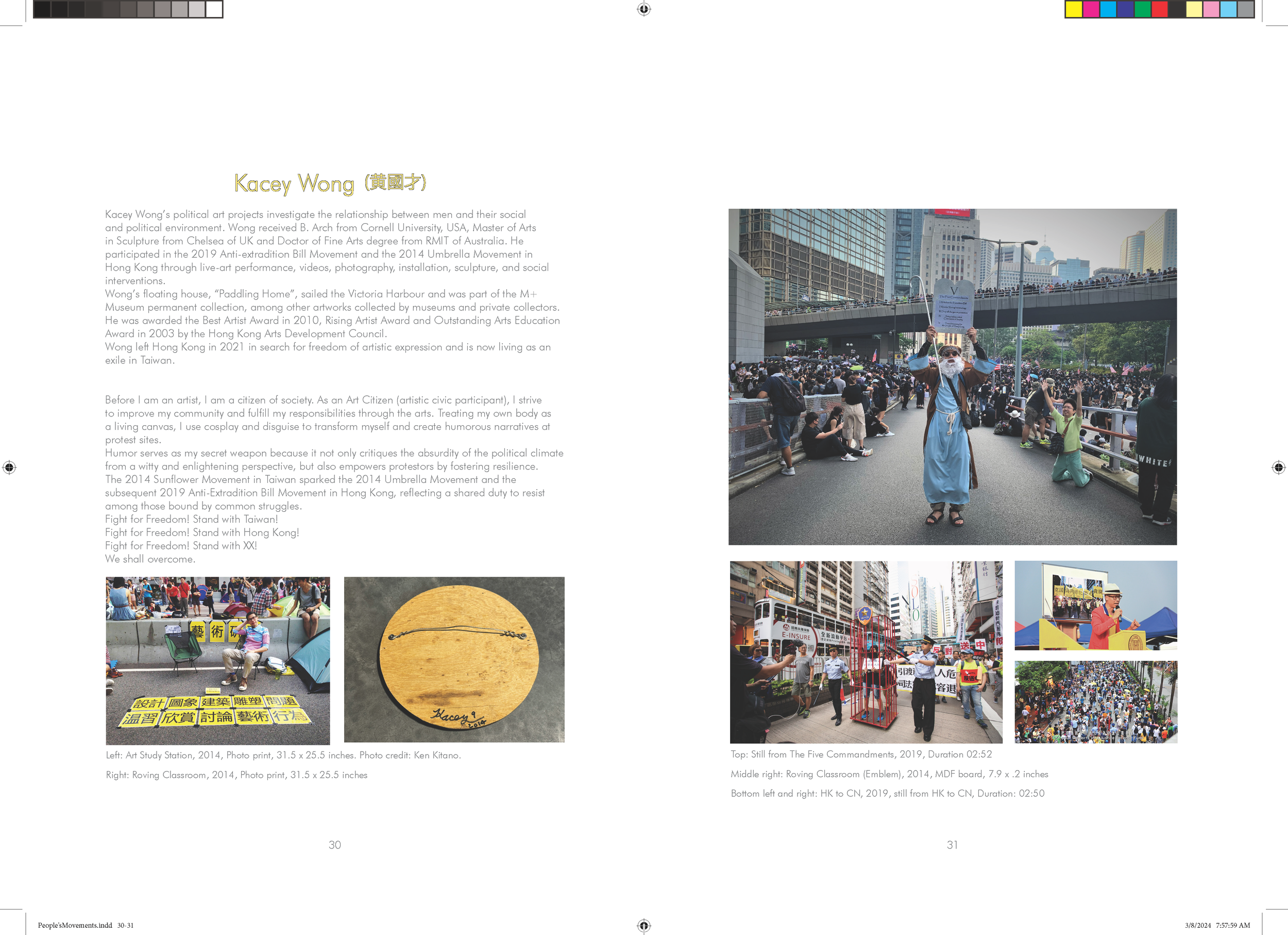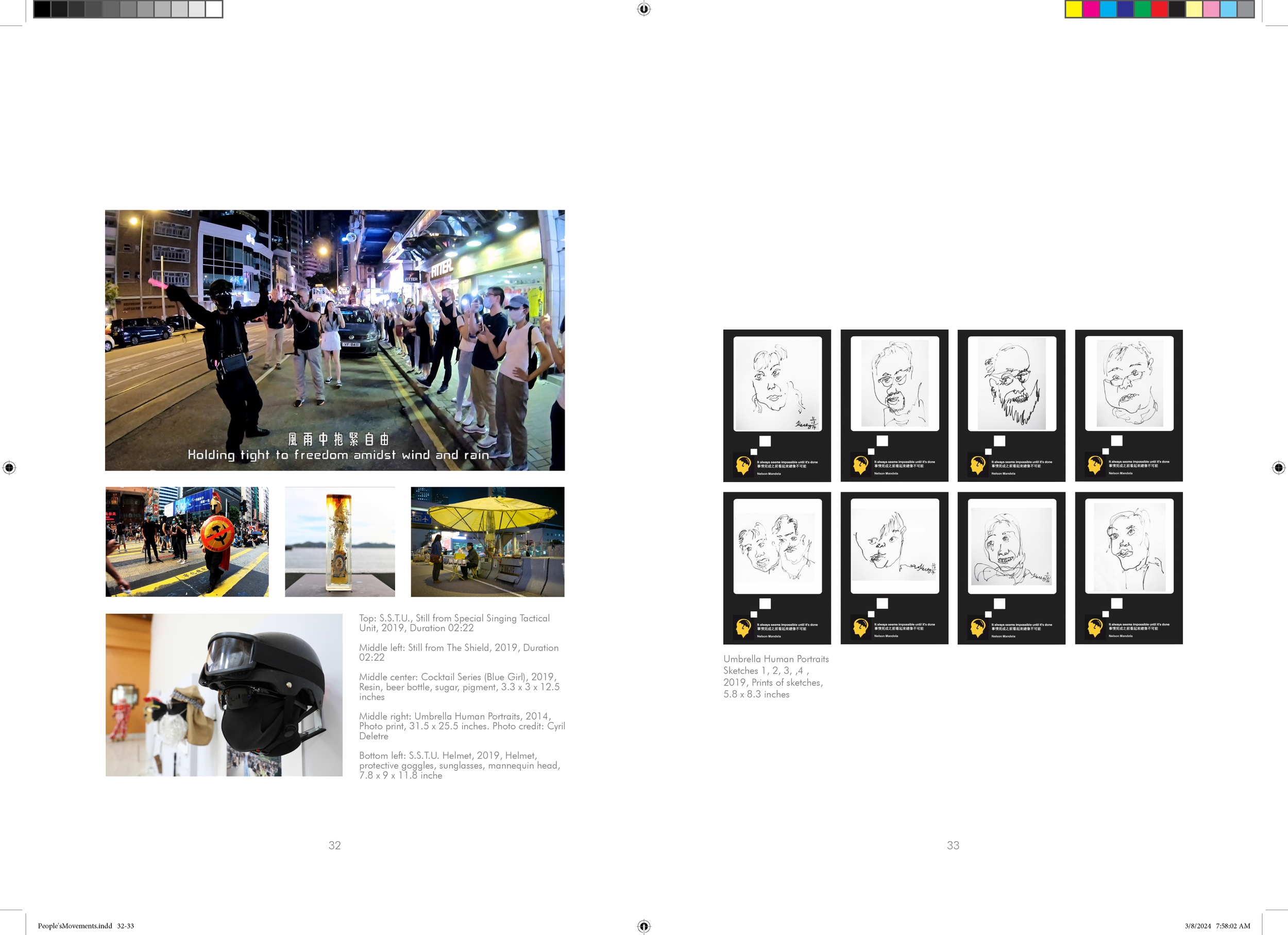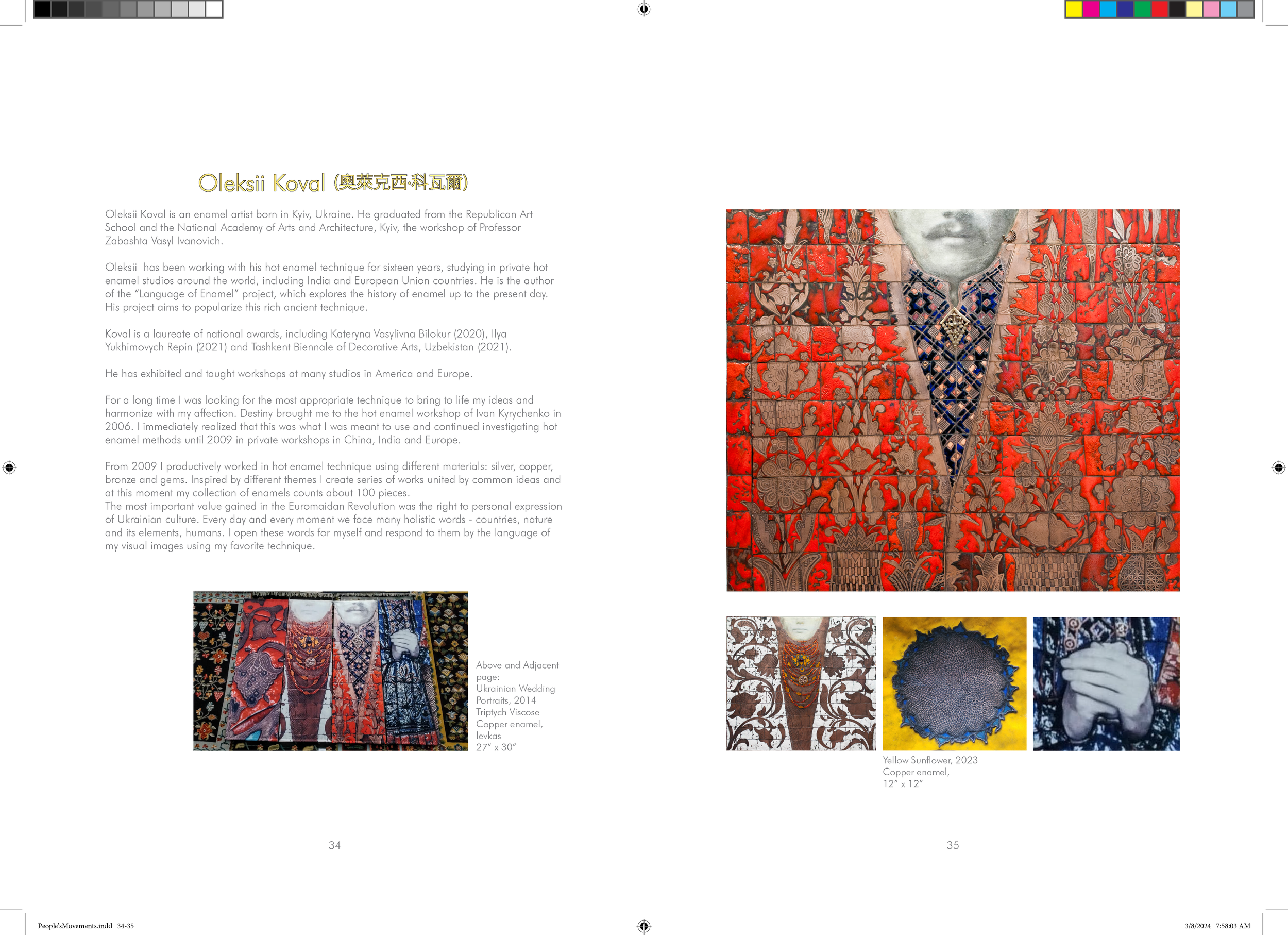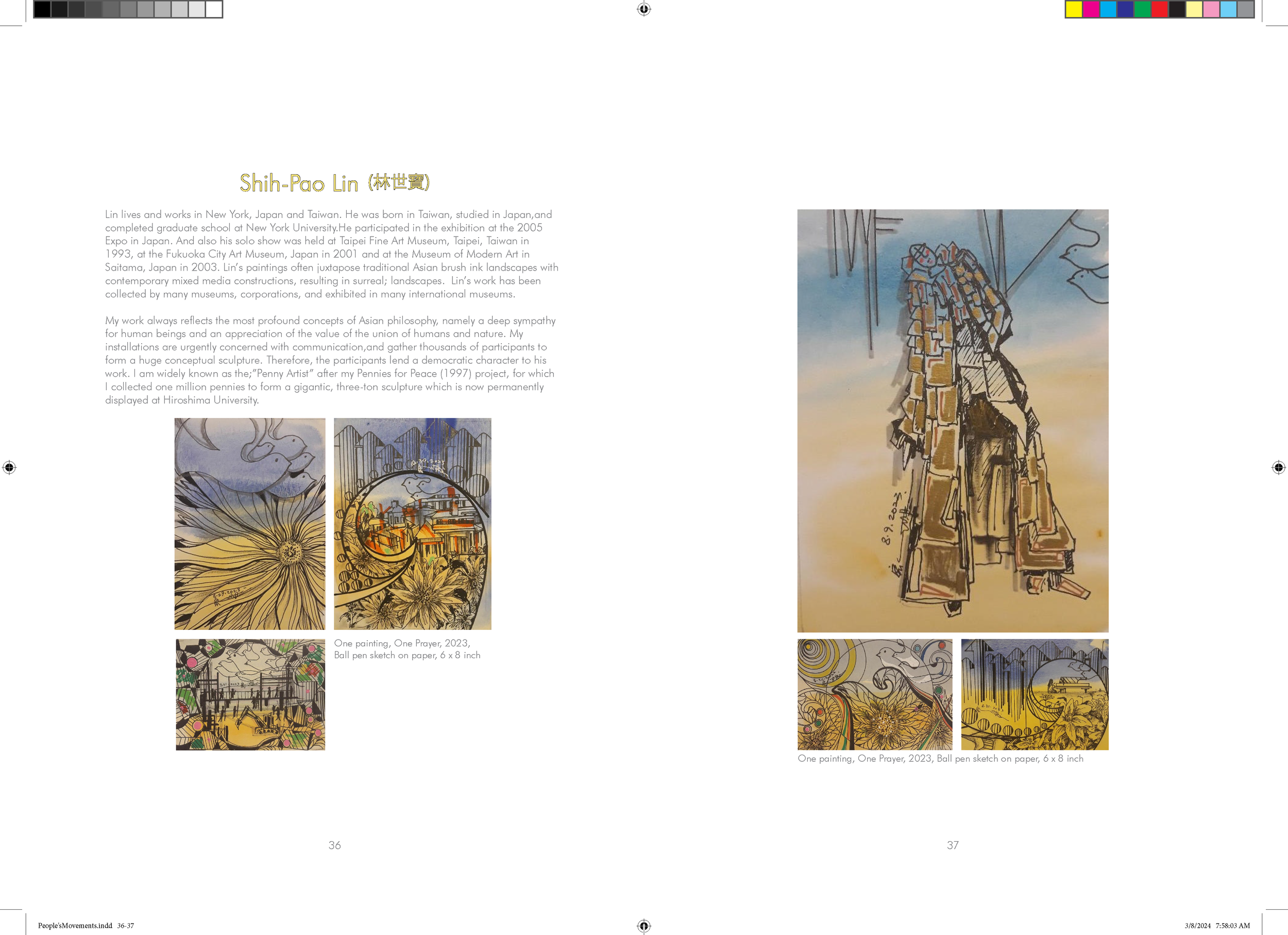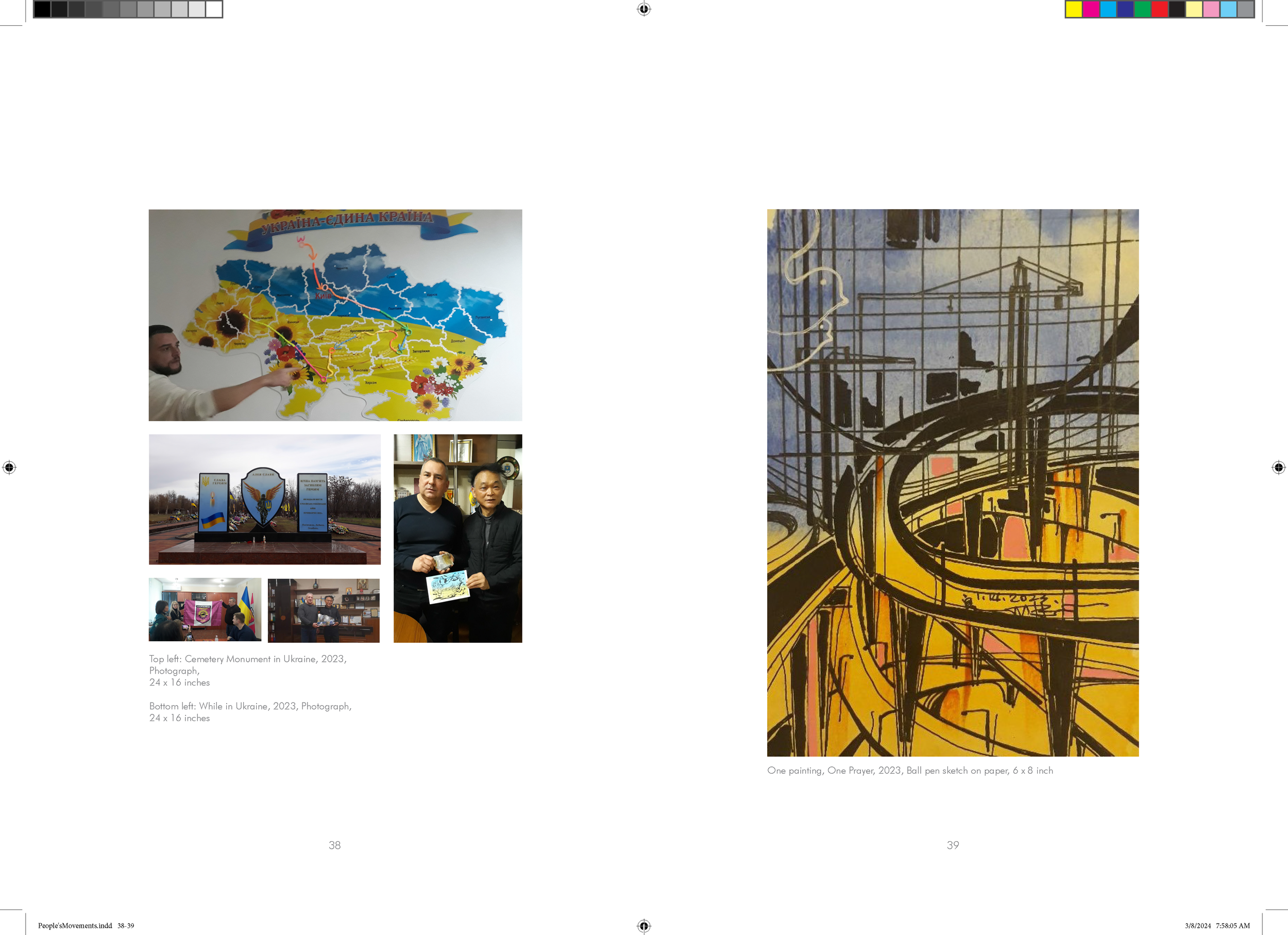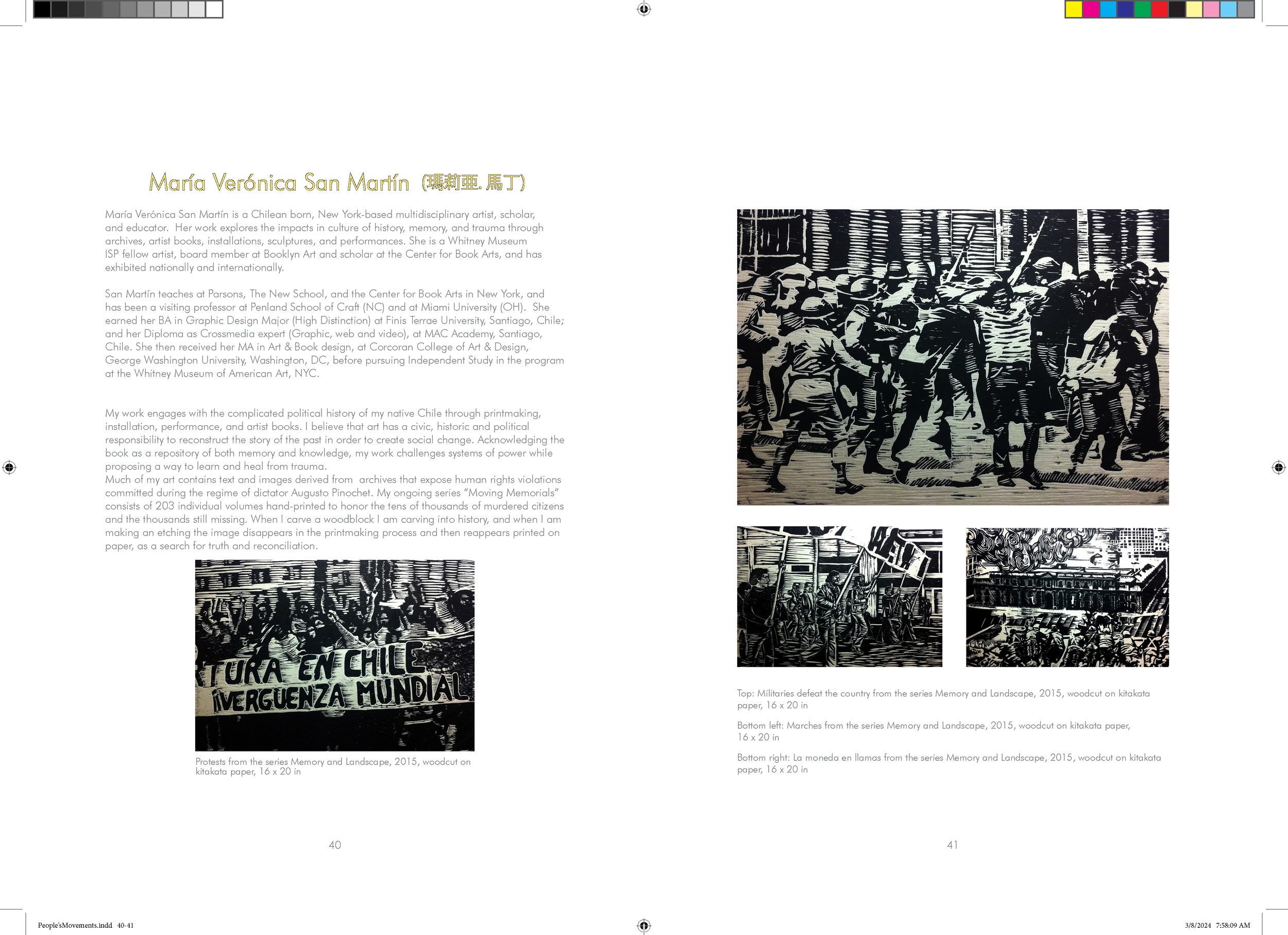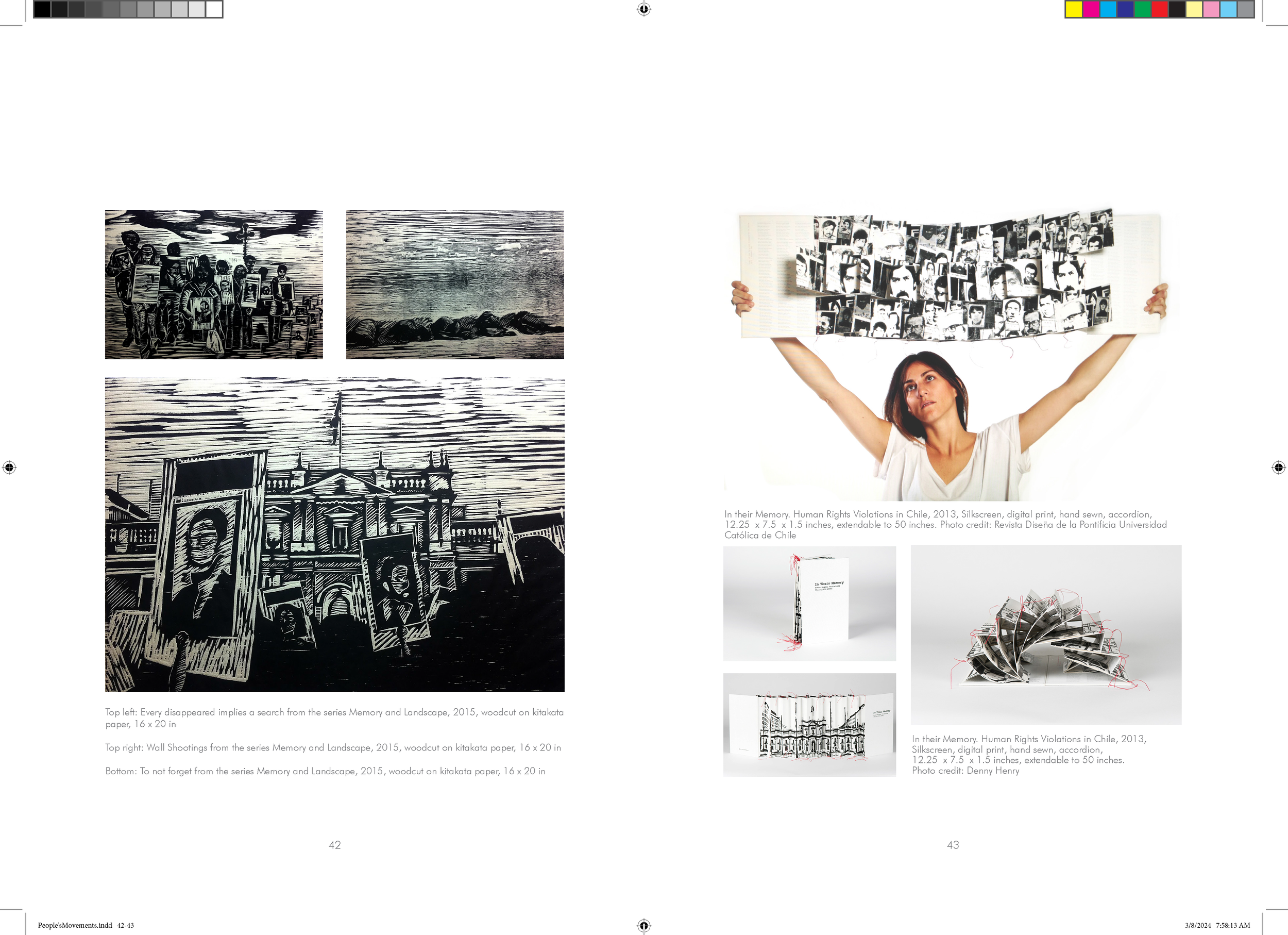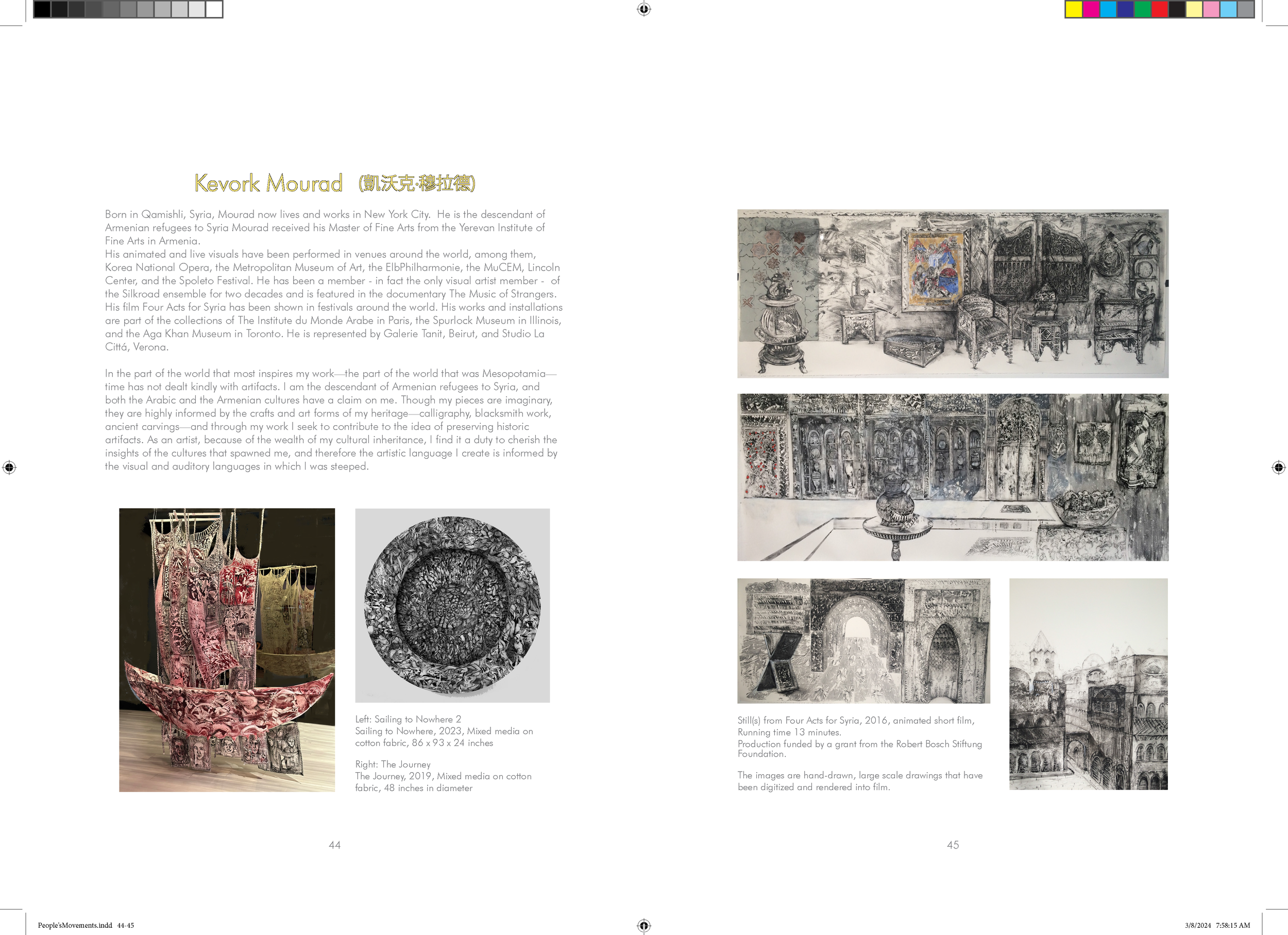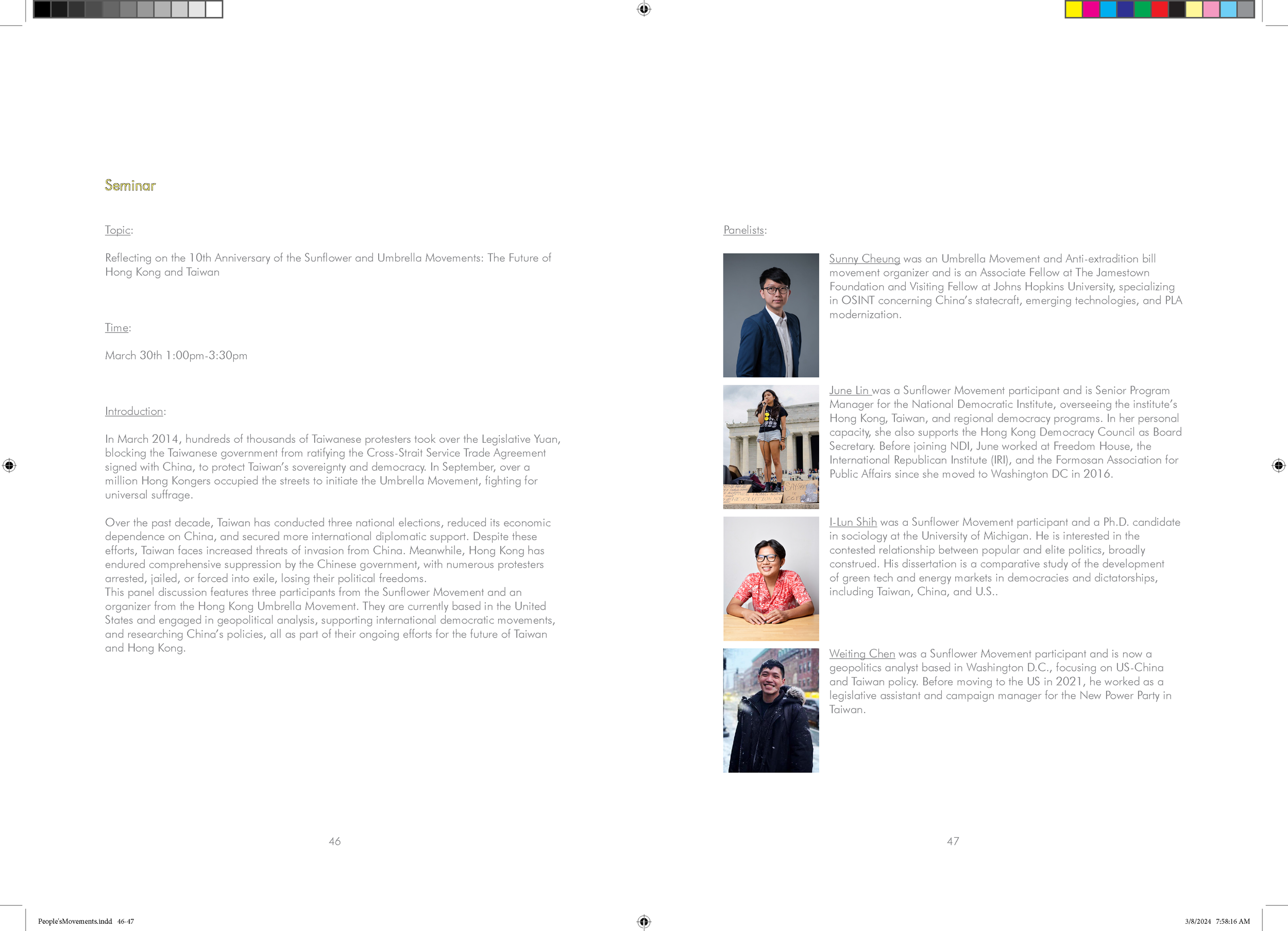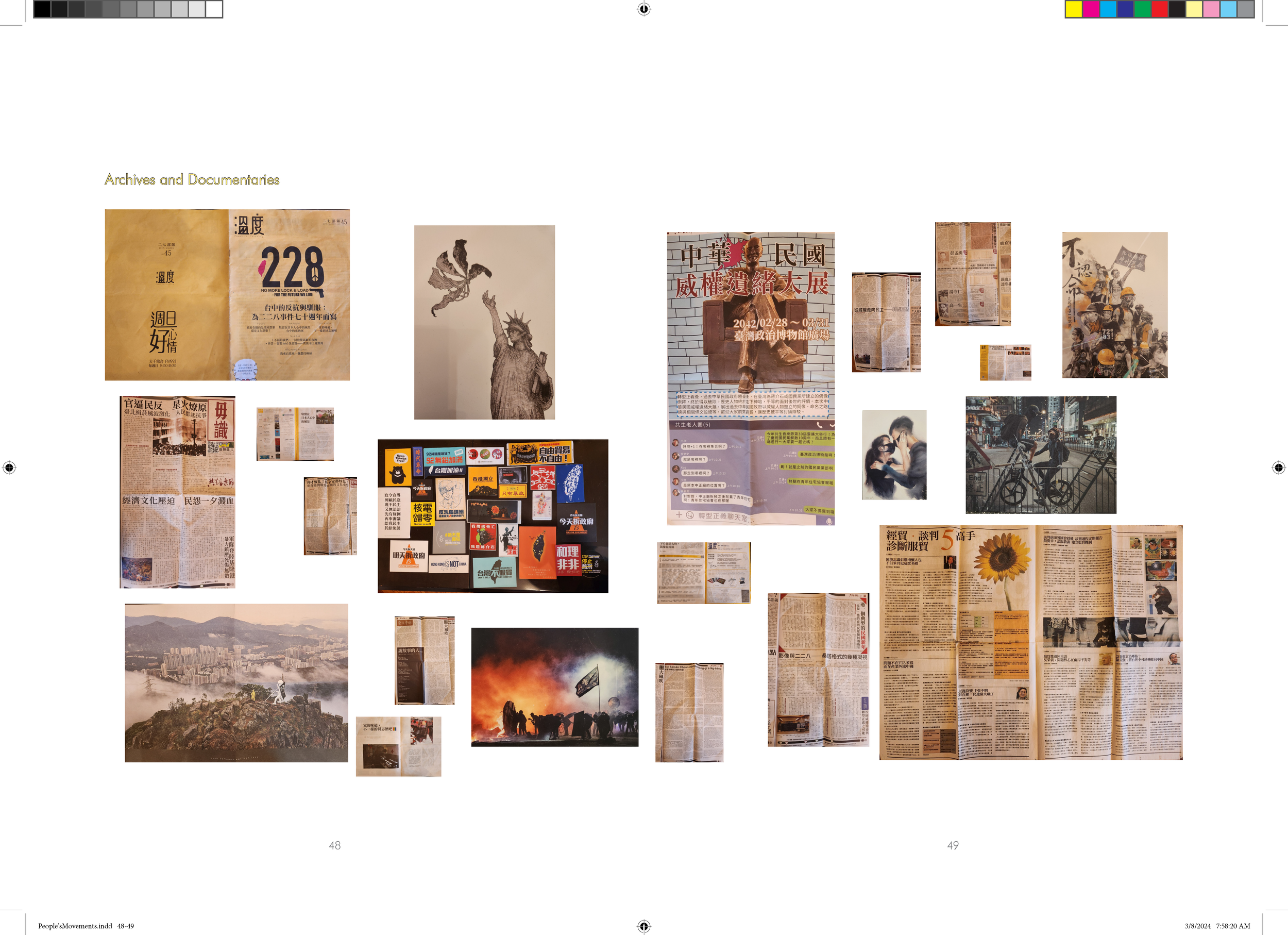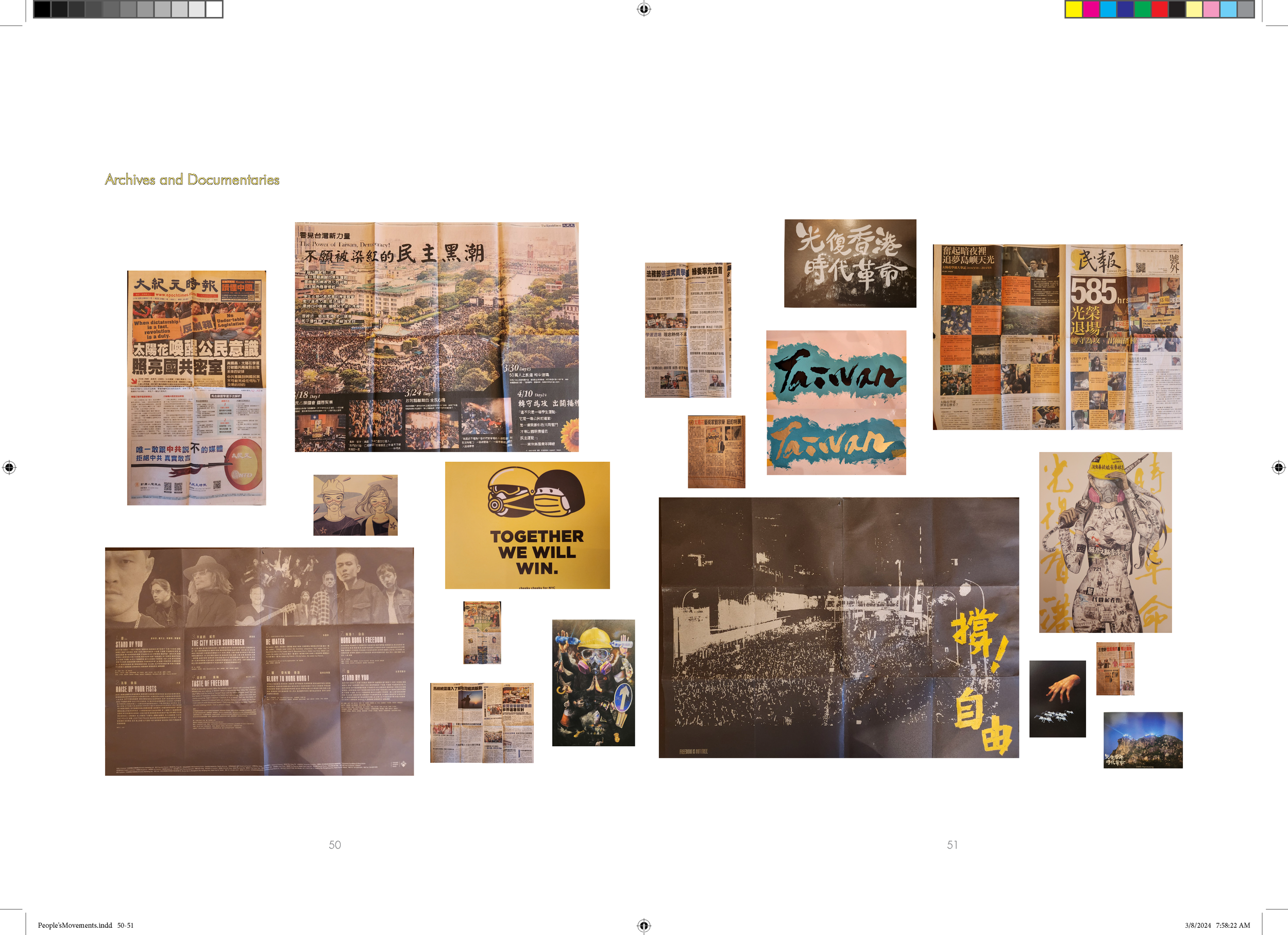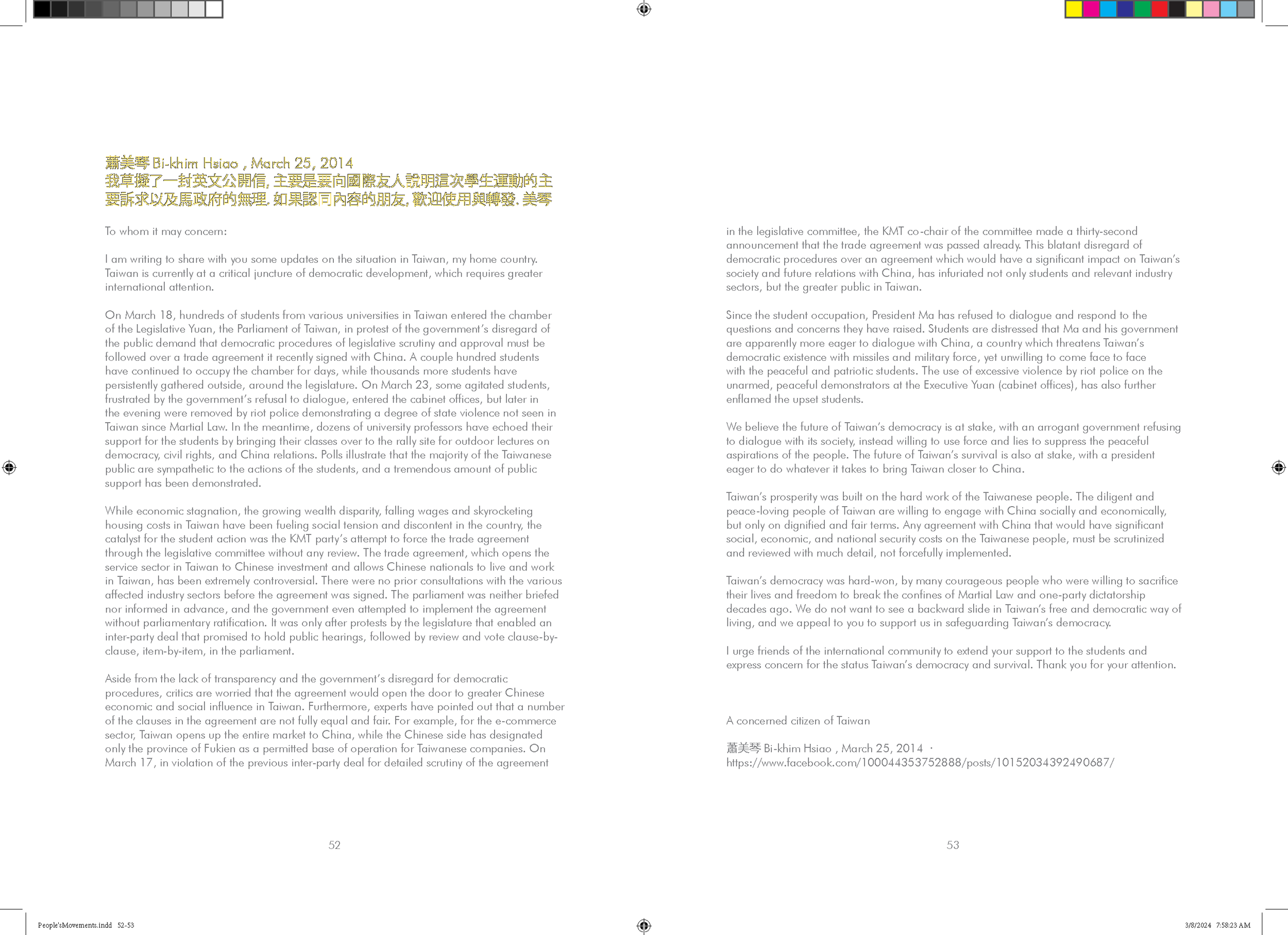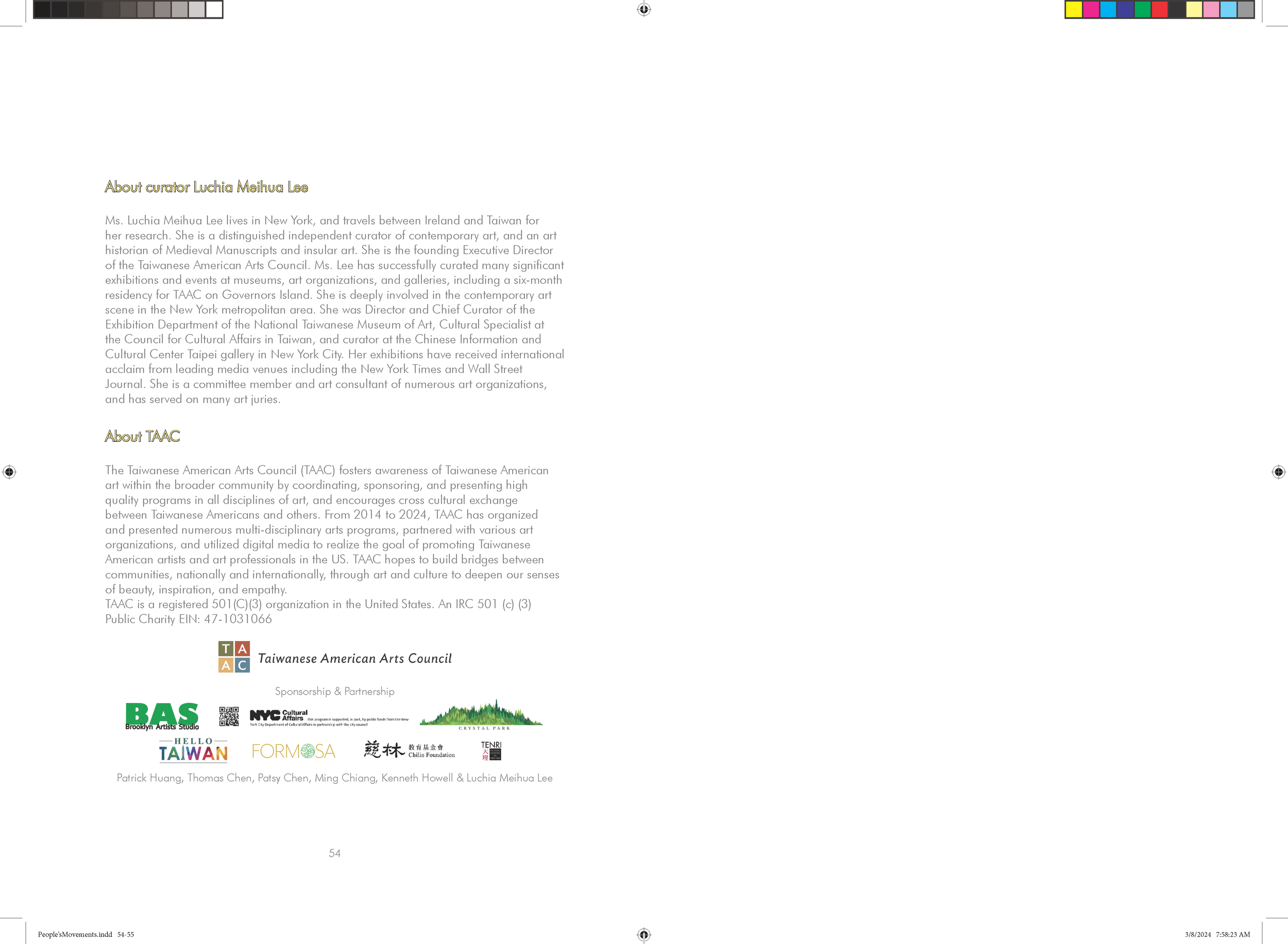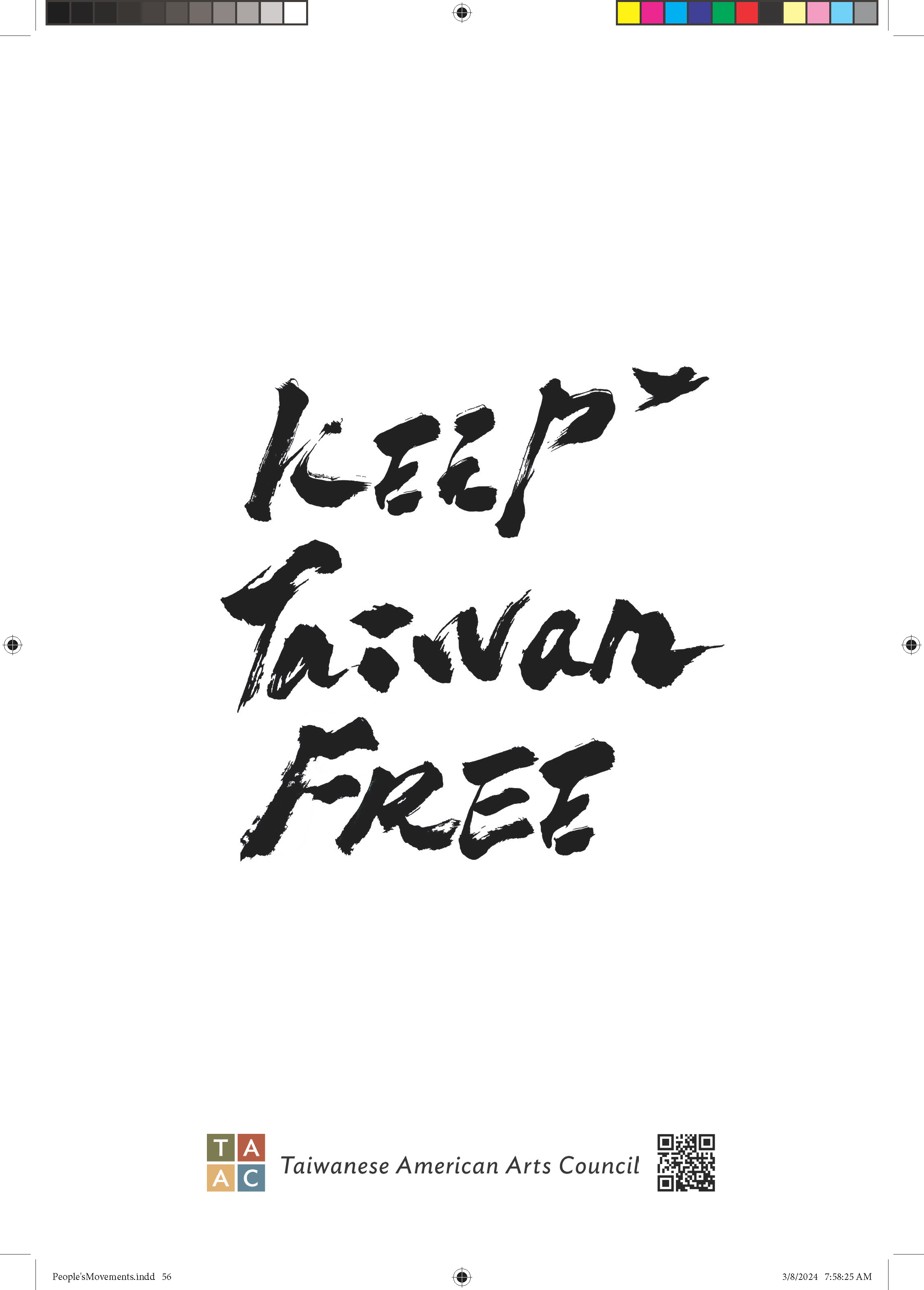Features Overview
FOREWORD
By Patrick Huang, Co-founder of TAAC
The season changes but don’t forget the sunflower.
Looking back on Taiwan's Sunflower Movement 10 years afterwards, the most striking result was that Taiwan’s so-called “Quiet Revolution" finally blossomed for the first time. Less than two years later, Tsai Ing-wen won the presidential election, bringing unprecedented changes to Taiwan. The series of revolutionary changes we witnessed made the Quiet Revolution finally worthy of its name.
The Quiet Revolution began as early as 1988 when Lee Teng-Hui came to power, determined to introduce democracy to Taiwan. He instituted popular elections, but this is not the same as establishing democracy. Taiwan went through three presidents, two changes of the ruling party over the ensuing quarter of a century.
However, it was not until the Sunflower Movement on March 18, 2014 that real change came to Taiwan. Before the movement, Taiwan was actually neither “quiet” nor “revolutionary.” The party-state system remained the same; uncivilized jungle politics continued as usual; successive governments were either unwilling or powerless to effect meaningful reforms. Even the political elites were the same old, lifeless bunch. This was a country skipped by the spring and its fresh breeze.
Fortunately, the young people of Sunflower awakened the sleeping God of Spring. The craze they set off to control their destiny and save the country swept across Taiwan. Not only did they help the Democratic Progressive Party (DPP) return to power, but they also in one fell swoop broke down the dominance in Congress that the Kuomintang (KMT) had engineered since 1949. The DPP has become the largest party in Congress. For the first time in history, it had the power to lead changes. And did President Tsai Ing-wen ever disappoint? She took full advantage of the opportunity, leading a very capable and determined government that allowed Taiwan to stand up and stand out in the world. She has tirelessly transformed Taiwan society into a completely new look, and achieved a peaceful revolution that lives up to its name.
Unfortunately, none of the peers of the Sunflower in other countries were as lucky or fared as well. They included the Umbrella Movement in Hong Kong (2014), the Independence Square Movement in Ukraine (2013), the Chilean Winter Student Movement (2013), the Arab Spring Movement (2010). The checkered records of their struggle, from having some measured success to being totally crushed, mean that we must continue to stand bravely with them, care for them and help them without hesitation. But this uneven result also in many ways testifies to the unique Goldilocks-like national character of Taiwan, including restraint and tolerance on the part of the ruling and opposition parties and society at large. These characteristics are currently being displayed in all aspects, making Taiwan stand out in the world and becoming a recognized force for good, even leaving China, which is deliberately trying to blockade and suppress Taiwan, feeling desperate and helpless.
In this age of misinformation, critics with ulterior motives are vilifying the young people of Sunflower as misbehaved children and despising them as brats. The truth instead is we owe them gratitude and a warm hug! Let us stand together, raise our voices, cheer them and thank them for changing and saving Taiwan! They are the true heroes and the pride of the Taiwanese people!
To all friends of freedom, democracy and human rights, I say seasons change and so do we, but whatever you do, Never Forget the Sunflower!
春去秋來歲月流轉 但請勿忘太陽花
10年後回顧台灣的太陽花運動,最鮮明的成果是讓前後歷時25年的所謂「寧靜革命」第一次出現落實的契機,不到兩年蔡英文總統勝選,帶給台灣前所未見的一連串革命性變革,讓寧靜「革命」終於名符其實。
寧靜革命早自1988年李登輝總統上台執政就已經開始,又歷經2000年第一次政黨輪替陳水扁總統上台、2008年第二次政黨輪替馬英九總統上台,但直到2014年3月18日太陽花運動發生之前,台灣其實既不寧靜也沒革命,黨國體制依舊,初暴政治照常,朝小野大改革無力,菁英政治清一色老面孔,死氣沈沈。這是一個被春天跳過的國家。
幸好,太陽花的年青人搖醒了沈睡的春神,他們所掀起的掌握命運改革救國熱潮橫掃全台,不但協助民進黨重新執政,更一舉沖垮國民黨萬年盤據的國會高牆,讓民進黨成為國會最大黨,而且享有國會過半的優勢,第一次歷史性的掌握主導變革的權力。蔡英文總統努力不懈,有政府會做事,讓台灣站起來走出去,讓台灣社會脫胎換骨面貌一新,成就名實相符的寧靜革命。
反觀國際上與太陽花同世代的青年救國運動,包括香港雨傘運動(2014)、烏克蘭獨立廣場運動(2013)、智利之冬學生運動(2013)、阿拉伯之春運動(2010)等等,他們的抗爭前仆後繼,他們的犧牲血跡斑斑,然而他們的曙光都很短暫,命運都很淒涼,熱血澆灌的民主自由的花朵沒有綻放、公平正義的夢想也沒有到來。
他們失去生命所換來的卻是和太陽花運動天差地別的結果,實在令人扼腕唏噓不已。我們必須繼續勇敢的和他們站在一起,關心他們協助他們,義無旁貸。同時我們必須更加重視自己,更加珍惜美麗寶島的特質,包括朝野政黨和台灣社會的克制與包容。這些特質目前正在各方面大放送,發光發熱,讓台灣在國際上脫穎而出,成為舉世公認的良善力量。桃李不言下自成蹊,讓處心積慮封鎖打壓台灣的中國也徒呼負負莫可奈何。爽!
太陽花的年青人現在被一些別有用心的批評者醜化為大腸花、甚至鄙稱為屁孩…。我們欠他們一個公道,一個熱烈的擁抱!今天讓我們站在一起高舉雙手歡呼他們,大聲感謝他們救了我們的國家!我們要高呼他們是全世界青年救國,改變國家命運的一流典範,是台灣人民心中的英雄和驕傲!直到永遠!
55 Pages booklet text with color plates:
Urban Tribes
A complete discourse about Urban Tribes, whose Urban Caravans refer both to those waiting at the US border as well as immigrants who are already here or eagerly seeking better spiritual or material opportunity.
Concrete examples of these experiences include sculptor Yutien Chang who was denied admission to the US upon landing at JFK on May 21 despite this young Brooklyn College graduated sculptor holding a dream of New York as the world center for art; multi-faceted artist Ming-Jer Kuo who is still striving to renew his artist visa; his series the Walkers looks at the city crossroads in various regions in Manhattan reflecting cultural diversity. Andrea Coronil whose father was investigated by the FBI and eventually forced to leave the US, and who turned into art the redacted FBI documents on her father; and Steven Balogh who endured Hungarian communism and forced military service and detainment in a refugee camp, and whose work at NYFA includes an old passport with the status "stateless." Felipe Galindo contributes a humorous take on the immigrant story from the immigrant's viewpoint. Building on the robot imagined by Leonardo, Pey-Chwen Lin uses AR and other advanced methods to construct a 3-dimensional clone to dramatize humanity's ill-considered use of technology. New technologies have united many people in a digital tribe without conferring identity, as illustrated in the 365 images of Digital Portrait - Jane by Yu-Chuan Tseng . Life in the city for many people has been like Walkers lined up in pedestrian crosswalks or the street sleeper by Chemin Hsiao, although we carry our own individual purposes. Miya Ando's video reminds us of the magical aspect of life, with her rising and falling origami birds and her fairy-tale. Kelly Tsai and Ryan Hartley Smith co-produce an animation that depicts the actual story of Americorp activities and celebrates voluntary work in the community. Lulu Meng makes a light box cave recalling her passport experiences.
URBAN TRIBES is a collaboration between the Taiwanese American Arts Council, New York; the New York Foundation for the Arts; and El Taller Latino Americano Art Center. The exhibition has been thematically divided into two sections. Section I, Urban Caravan, focuses on world caravans, that is, all those who choose to leave the hometown looking for a better life on the material or spiritual level. Artists from New York and abroad, representing several ethnicities, will exhibit work at three venues. In Section I at TAAC Tribeca/E. Tay/R Gallery, 15 artists from Taiwan or from New York focus on humanitarian and cultural diversity issues, as well as experience of the family and self in a new land; social justice is the common theme.
NYC Art Bridge :
An emotional wellness of art
By Luchia Mihua Lee
"The value of a work of art … lies in its power to bestow happiness. The values of this power naturally stand in a causal relation to the psychic needs they satisfy.”
--Wilhelm Worringer (1881-1965), “Abstraction and Empathy, A Contribution to the Psychology of Style
Art historian W. Worringer argued that artistic creation should strive for the truth of organic life, characterized as a form of naturalism that reflects empathy. From this perspective, art establishes a connection with the external world, removing it from arbitrariness and randomness. By doing so, art purifies the flux of being and attains an appropriate absolute value. Moreover, if self-alienation is regarded as a profound driver, then art can be appreciated precisely because it is psychologically motivated. Art arises from and satisfies psychic needs, thus fulfilling an essential role in human experience.
YC Art Bridge is an exciting and innovative initiative that aims to bring together different sectors of the community to exchange ideas around mental health and art. By creating a network that includes art professionals, mental health professionals, families, and individuals, the initiative provides a safe and culturally-informed space for discussion of experiences and feelings about mental health. The focus on collaboration, beauty, and harmony speaks to the potential for art to serve as a unifying force that brings together people of various backgrounds and experiences.
While the aesthetic sense of antiquity is inadequate to explain all of art history, a more modern and comprehensive view sees art creators as driven by an inner need and seeking self-activation through a process of empathy, allowing mankind to locate itself in relation to the cosmos. Empathetic art can take various forms and reveal itself as a natural vitalization or a psychic impulse. However, while the concept of empathy explains some parts of art well, it fails to value the full artistic panoply. To complement empathy, Worringer famously appealed to abstraction. The selection of artists presented in NYC Art Bridge promotes a discourse on the concepts of empathy and abstraction in an aesthetic system.
Through art creation and discussion, people can travel towards mental wellness as they explore and express their emotions and thoughts. Rather than merely attempting to capture the outer world, they strive to redeem the given object through the transformative power of art.
Having deliberate discussions with these artists can yield deeper insights into the inspiration behind their artworks, and how their personal experiences condition their artistic practices. These interviews can also help foster a sense of community among participants and promote open and honest conversations about mental health and wellness.
It may be argued that the highest beauty and artistic fulfillment can only be achieved when the artist expresses ideas that are in harmony with the appearance of the outer world. This may involve confronting our spiritual dread of time and space, which can be bewildering but can also lead to a deeper understanding of the world.
Medical science has recognized the potential of art in revealing mankind's creativity and promoting mental wellness, which can help individuals enter into a relationship of friendly confidence with the outer world and lead to a shift from the practical, material world towards a more abstract and peaceful expression. By exploring these themes and showcasing the work of diverse artists, the NYC Art Bridge program facilitates a meaningful dialogue about mental health and emotional wellness in our community.
The exhibit highlights the importance of artistic volition and how it has evolved to encompass a wide range of styles and media. It also emphasizes the impact of cultural experience and community on artistic expression and how it can inspire innovation and creativity. Artists use their unique life experiences to create art that can provide a new perspective on the universe and ourselves. For example, Huey-min Chuang's paintings and drawings about her personal journey, Cecile Chong's video about language learning, Poyen Wang's animation showing a lonely boy, Hsin-yi Liu's painting of a busy teddy bear, and CHATogether's graphic novel about parenthood all offer different ways of looking at the world and potentially inspire viewers to reflect on their own lives.
Leo Tolstoy's perspective on art as a means of communication and progress is particularly relevant to the importance of art in bridging the gap between different cultures and communities. In the Asian community, belief often takes precedence over scientific psychiatric treatment, leading to a need for alternative approaches to addressing mental health concerns. Hence, art can provide a means of expression and communication that transcends cultural and linguistic barriers.
Moreover, by emphasizing the imperfections and inconsistencies of life, art encourages a sense of empathy and compassion among individuals, promoting social and emotional healing. This aligns with Tolstoy's notion of art as a means of defining the highest good at which society aims, and agrees with Worringer’s recognition that every style of art represents the “maximum bestowal of happiness for the humanity that created it,” and his feeling that this should be the supreme dogma of all objective consideration of the history of art.
Exploring the dimension of artistic volition and bringing together artists, mental health professionals, and the public in a cross-disciplinary setting, NYC Art Bridge can help promote emotional wellness and facilitate frank discussion about important issues facing our community. By addressing themes such as bias against the AAPI community and the immigrant experience, the project can help raise awareness about pressing social and cultural issues while also providing a platform for artists to express themselves and showcase their work.
Now, art can serve as a means to explore deeper aspects of human existence and the world around us, including spiritual and philosophical dimensions. Hence, through artistic expression, artists can convey complex emotions and ideas that might be difficult to put into words, and thereby enrich our understanding of ourselves and the world we inhabit. Ultimately, the goal of NYC Art Bridge is to provoke discussion of the urgent social issues of the moment.
References:
Worringer W. Abstraction and Empathy: A Contribution to the Psychology of Style, International Universities Press, New York, 2014
Tolstoy, L. What is Art? Digireads.com Publishing, 2020
Mukařovský, J., Abstract Functions, in Harrison C and Wood P, Art Theory 1900 - 2000, Blackwell Publishing 2006
Schapiro, M., The Social Bases of Art, in Harrison C and Wood P, Art Theory 1900 - 2000, Blackwell Publishing 2006
Feature 2
REWOVEN: Innovative Fiber Art, an international collaboration between the Taiwanese American Arts Council, New York; the Kaohsiung Museum of Fine Arts, Taiwan; Queensborough Community College Art Gallery, CUNY; and the Godwin-Ternbach Museum at Queens College, CUNY on display from April 6–May 26, 2017.
In this exhibition, ten artists express creativity and a commitment to environmental issues in a convergence of painted, woven, assembled, and installed artworks. While many pieces incorporate traditional craft, the artists use contemporary strategies to transform natural, industrial, and waste materials into works of wit, whimsy, protest, and beauty that address the endangered Earth. Each piece displays ingenuity in redefining the practice of fiber art. In pursuit of a radical agenda, these compelling voices reexamine innovation, social justice, and art history in a distinctly Taiwanese context.
The artwork was chosen by the curatorial team of Tseng Fangling (Kaohsiung Museum), Chien Cheng-yi (Kaohsiung Museum), Luchia Meihua Lee (Taiwanese American Arts Council), Faustino Quintanilla (QCC Art Gallery), and Amy Winter (GTM). This collaborative project will be on display at three sites: the Godwin-Ternbach Museum; the Queensborough Community College Art Gallery in Queens; and El Museo de Los Sures in Brooklyn, with a total of 24 Taiwanese and New York-based artists. The Godwin-Ternbach Museum is exhibiting work by ten Taiwanese artists: Chen Ching-Lin, Hsu Wei-Hui, Huang Mei-Hui, Teresa Huang, Huang Wen-Ying, Pan Ping-Yu, Wu Pei-Shan, Wu Yun-Feng, Yang Wei-Lin, and Wen-Fu Yu.
Curatorial team:
Curators in New York: Dr. Amy Winter, Dr. Faustino Quintanilla, Luchia Meihua Lee
Curators in Taiwan: Tseng Fangling Co-curator: Chien Cheng-Yi
REWOVEN: Innovative Fiber Art From Taiwan
Venues and Dates
QCC Art Gallery, CUNY
March 16–June 17, 2017
Opening Reception: Thursday, March 30, 5–8 pm
Godwin-Ternbach Museum, Queens College, CUNY
April 6–May 26, 2017
Opening reception: Thursday, April 6, 5–8 pm
El Museo de Los Sures
April 18–June 30, 2017
Opening Reception: Thursday, April 20, 6–8 pm



